






It’s








It’s
Tom Foster - Editor
Abike’s exhaust has a huge influence on our riding enjoyment. It actually puzzles me a little. I consider myself fairly focused on performance. I’m not fussed what a bike looks like. I just want it to ‘work’. I spend my time trying to develop the characteristics in the bike that will let me ride the way I want to ride as best I can. Comfort is important in an adventure bike, and I like to stand up in rough terrain, so I spend a lot of time getting the height and position of the ’bars to suit, the ’pegs where and how I want them, and things like lever position and screen are important to me.
I also like to shed unnecessary weight from the bike, and often that means an aftermarket exhaust, and this is where things get particularly interesting.
There’s something really thrilling and exciting about a thunderous four-stroke, and even more about a crisp, sharp two-
stroke. It makes a rider’s heart beat faster. It seems as though the motor is a joyous, never-ending symphony – like a video loop of open-cut mines being blasted. It’s fabulous.
The thing I find so interesting is wondering why that’s the case.
If I’m so focused on performance, why do I get so excited at the sound of a V-twin driving hard from a sweeping bend, or a full gate of two-strokes heading for turn one? Shouldn’t I be thinking about how those bikes are built and what’s going on to allow them to perform that way?
And it’s obviously not just me.
When MotoGP was born and fourstrokes were coming the governing body set a ridiculous volume limit for the bikes, saying it was good for the environment. None other than Valentino Rossi stepped up and said making the bikes sound like ‘hairdryers’ might be good for the environment, but it would be bad for the sport. Of course, the possibility of losing spectator dollars immediately had the decision changed.
That’s how important and influential the sound of a motorcycle can be, and it has an even greater effect on the rider than it does the bystanders.
If you doubt just how big a factor the sound of a motorcycle is as part of the enjoyment of riding, try an electric bike. E-bikes now offer serious, race-ready
performance and compete in world championships in a couple of classes, but riding one, and even more, trying to watch a race, is nearly as boring as watching parliament. It’s as though everyone’s trying their hardest to be excited, but it’s just not happening. Stupidly loud exhausts like the ones favoured by a sector of Harley owners are definitely a threat to future of motorcycles everywhere, but so is the other extreme.
“If I’m so focused on performance, why do I get so excited at the sound of a V-twin driving hard from a sweeping bend, or a full gate of two-strokes heading for turn one? ”
There’s not much hope politicians of any stripe in any nation will be sensible when it comes to making laws in such a sensitive and emotive area as motorcycle sound. Let’s enjoy what we have while we can, and maybe if we’re just a little careful about what we do and how we do it, we may get to enjoy this amazing way of life for a whole lot longer.
















FUEL SOLUTIONS
Hünesdorff Fuel Canisters, Rotopax Fuel Cells and Giant Loop Fuel Bladders.


LUGGAGE SOLUTIONS
Wolfman Luggage
Expedition Dry Duffel Bags, Metal
Mule UTE pannier Box, Giant Loop Great basin and the Mototrekk Pannier Bags.









HELMET SOLUTIONS
KLIM TK1200 Karbon Modular Helmet, KLIM KRIOS, Schuberth E1 Helmet and Nexx XD1 Baja Helmet.



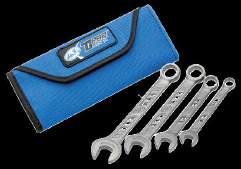


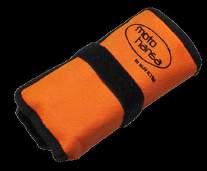
TOOL SOLUTIONS
Motohansa Compact 38 Piece Tool Kits For BMW, Honda & KTM, Cruztools Speedkit tool kits and Motion Pro TiProlight Titanium 4 Piece Wrench Set

























Adventure Rider Magazine is published bi-monthly by Mayne Media Group Pty Ltd
Publisher Kurt Quambusch
Editor
Tom Foster tom@maynemedia.com.au
Group Sales Manager Mitch Newell mitch@maynemedia.com.au
Phone: (02) 9452 4517 Mobile: 0402 202 870
Production Arianna Lucini arianna@maynemedia.com.au
Design Danny Bourke art@maynemedia.com.au
Subscriptions The J Dog (02) 9452 4517
ISSN 2201-1218
678 812
Postal address: PO Box 489, DEE WHY NSW 2099 Australia
Website: www.advridermag.com.au
Enquiries:
Phone: (02) 9452 4517
Int.ph: +61 2 9452 4517
Int.fax: +61 2 9452 5319






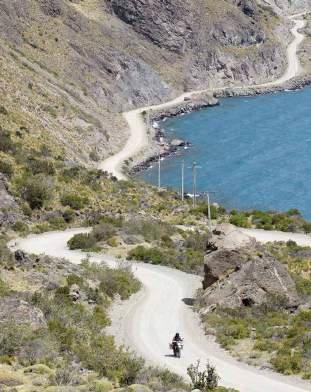




THE NEW TIGER FAMILY IS HERE. ALL BUILT TO BE BETTER IN ABSOLUTELY EVERY WAY, OFF-ROAD AND ON.
Available in 1200 and 800 configurations – the o -road ‘XC’ range boasts more than 200 chassis and engine upgrades, with a shorter ratio first gear, enhanced rider ergonomics, a more responsive Triple engine and freer flowing exhaust. Add to that new full-colour TFT instruments, up to six riding modes (with O -Road Pro on the XCA), all-LED lighting, illuminated switchgear and a new 5-position adjustable screen, and you have the most comprehensive choice of model and specification ever.
The NEW Tigers are built for maximum adventure, every single day. To find out more visit: triumphmotorcycles.com.au TEST RIDE TODAY


Above: Along with 200 very happy riders were 20 or so equally happy BMW staff and support crew.
Below: The annual Beemer celebration punted off from Thredbo and made its dusty, sometimes challenging, way to Bright.

In its 24th year the BMW GS Safari was bigger than ever. Around 200 starters, not including the 20 or so BMW staffers and media, mounted up and headed into some of Australia’s most spectacular country. The riding, both on- and off-road, was fantastic.
For 2018 BMW Motorrad’s biggest ride of the year headed to a start at the NSW ski resort of Thredbo. Before the event over 70 riders lined up for a session or two of BMW Off Road Training with instructors Shane Booth and Chris Urquhart. As a major bonus, Boothy and Urqy had a celebrity VIP Instructor: Isle of Man TT competitor Cam Donald. The instructors’ A Team helped riders prepare for five big days of dualsport adventure.
Following the coaching sessions, the annual Beemer celebration punted off from Thredbo and made its dusty, sometimes challenging, way to Bright in Victoria. The picturesque gateway to the Victorian mountain region made an excellent headquarters for two days of roosting around some of Australia’s most glorious adventure terrain. With Bright and its surrounds thoroughly explored and enjoyed the whole shooting match once again packed up and headed out, this time for Mansfield, where Adventure Rider Magazine climbed on board a 2018 R1200GSA Rallye X and joined the ride.
After some light overnight rain the BMW stampede hit the road and

headed out of Mansfield steering for Lakes Entrance, 450km or so to the south.
As always, the GS Safari – as opposed to the GS Safari Enduro – was focussed more on the sightseeing and pleasure-riding experience than the challenge of tough terrain, although there were a few sections in the first days that apparently kept riders on their toes.
It’s hard to imagine anywhere better for riding a big BMW than central and southern Victoria when the weather’s good. Towns like Jameison, Licola and Bruthen offered comfort stops and catering, and the scenery, what could be seen of it through the dust, was awe-inspiring.
Unfortunately, despite the welcome rain, dust was the most memorable feature of the day. It was thick, nearly opaque, and it seemed there was no relief to be found for anyone. But it’s all part of the adventure-riding challenge and was accepted with good humour.
Above: A slippery length of timber just under the water’s surface caught riders out.
Below: Bright in Victoria was a picturesque gateway to the Victorian mountain region.
On the reverse side of the ledger, BMW’s staff, including route-setter Grant Evans and Adventure Rider Magazine’s Miles Davis, had made a very strong point during the briefing about riders being being safe and defensive, especially when visibility was poor, and the result was no injuries or DNFs due to the dust. Riders were sensible, kept left and rode to the conditions…except for those who got a little excited. A ‘chat’ with Miles Davis at the end of, or during, the ride was a sure sign a rider had been less watchful than was safe under the conditions.
It was a long session on the bike and fatigue played its part late in the day. There was a very small creek crossing right near the end of the route, and while it looked innocent enough, a slippery, wet length of timber out of sight just under the water’s surface





had riders flapping around in the shallows like mullet caught by a fast-ebbing tide.
Still, aside from some bruised egos there were no dramas and the entire show rolled smiling into the scenic seaside village of Lakes Entrance.
The final day from Lakes Entrance back to Thredbo was also set to be something over 400km, but the first 120km or so included a run along the Bonang Highway, and for lovers of true 50/50 riding – which includes the overwhelming percentage of GS owners – this winding section of bitumen was a glaring highlight of the 2018 event. Swooping and curling its way through the mountains and sunshine to, predictably,Bonang, Hearts were racing as the Beemers carved up the asphalt and looked good doing it (some hearts raced a little faster than others. Adventure Rider Magazine’s editor set out in chase of BMW marketing manager Nigel Harvey who took off like a scalded cat. Things may have become a little feisty carving through the traffic and the editor spent the evening skulking around in the shadows hoping to avoid a Miles-D chat. For the record, he didn’t catch Nige, despite the BMW man having obeyed all road rules and speed limits).
About the only thing that could surpass a stretch of road like that would be a section of dirt that followed the Snowy River. After stopping at places like McKillops Bridge for a snack and look at the amazing valley, and to consider the history of the bridge itself, the route roared along the Snowy River Road and on to the dry, deceptively low-grip Barry Way. Cattle wandered along the road, emus and brumbies made appearances, and alongside it all was the gorgeous Snowy River. The Barry Way allowed the field to stretch out and clear air was the order of the day. The sun was shining, the water in The Snowy was crystal clear and the views as close to perfection as any scenery could be on a warm, clear day.
A relaxing run along the final few kilometres of bitumen into Jindabyne had everyone in a perfect frame of mind to enjoy the run up the mountain road to Thredbo where new tyres, hot showers and comfortable rooms waited. More than anything else, 200 or so extremely happy and well-satisfied riders settled in for the traditional final-night dinner and presentation.
There’s a lot more to the BMW GS Safari than meets the eye.
Of course it’s a superb ride that pretty
much sets the standard for seamless logistics and incredible preparation and support. But the friendship among riders is strong and the support from BMW is astounding. Coaches, technicians and even a doctor are on bikes circulating through the field and helping wherever needed. The supply of spares and tyres from the support vehicles is incredible, and the fundraising for the Royal Flying Doctor Service is substantial. Even though it’s kind of an unofficial part of the ride, the respect of the riders for the RFDS is an ongoing theme of recent years and, along with the camaraderie and fun of facing the challenge, looms large in riders’ minds. Their generosity is humbling.
The next outing for this awesome group is the 2018 BMW GS Safari Enduro in Tasmania this October.
We’ll keep our fingers crossed for another invite. If we play our cards right we might even get another run on the Rallye X GSA. That bike in that place would be truly spectacular.

Above: McKillops Bridge offered a look at the amazing valley. The history of the bridge itself made a stop worthwhile.
Below: Cattle wandered along the road.






An upgrade on the R1200GS Rallye X. BMW has made the editor’s fantasy a reality (Taylor Swift not shown).

Images: BMW Motorrad
Holy better-than-ever, Batman! A GSA version of the Rallye X? You bet. And it screams leading-edge tech and ball-busting performance.
hen Adventure Rider Magazine was invited to ride a couple of days of the GS Safari we expected an F800GS or GSA. It’s the bike we always ask for, and until we rode the Rallye X last year, our favourite BMW off-roader.

When an e-mail arrived asking if we’d like a Rallye X GSA we assumed it was either a mistake – there was no Rallye X GSA we knew of. Only a GS – or BMW was exercising its sense of humour, offering us a bike we’d dreamed of but didn’t exist.
When we strolled into GS Safari headquarters in Mansfield we nearly shat. There, outside our motel room, basked a shiny, clean and damn sexy Rallye X. But not just a Rallye X. A Rallye X GS Adventure. Dreams do come true.
The bike is of course an upgrade on the R1200GS Rallye X which left us in awe in 2017, but with the extra fuel capacity we lusted after.
There’s more to the new bike than that of course, but we had to rush into the motel for a very cold shower and some clean undies before we could look any closer.
What we did find on the new bike eventually was:

Above: GPS and instrumentation meant we were never out of touch with the bike or our location.
R BMW Motorrad ABS Pro (cornering ABS)
R Heated grips
R On-board Computer Pro
R Chrome exhaust
R Hand protection
R Cross-spoke wheels
R Dynamic ESA (Electronic Suspension Adjustment)
R Navigation preparation
R Cruise control
R Continental TKC 80s
R LED headlight
R Gear-shift Assist Pro
R Riding Mode Pro (Rain, Road, Enduro, Enduro Pro, Dynamic, Dynamic Pro)
R DTC (Dynamic Traction Control)
R Hill-start control
R LED indicators
R Short windscreen (from the R1200GS)
R Rallye seat, AND R Daytime riding light.
We’ve lumped all that into a list to get you the facts fast. As we stood there gazing in awe and with a feeling of what might’ve been adolescent desire, what we saw was pretty much a big BMW someone had ridden straight out of our dreams.
We looked around in case a naked Taylor Swift may somehow have made the leap from our fantasies as well, but there are limits, even for BMW.
We were happy beyond words.
Riding the Rallye X GSA was all we hoped for and more.
The comfort was all we’ve learned to expect from BMW and the electronics were as good as anything we’d ever ridden. We fooled around a little with modes and loved the sting of the bike in Road mode, appreciated the tamer approach of the Rain mode in the wet on the tarmac, and most of all found Enduro Pro to be the cat’s miaow for almost everything. BMW’s traction control and ABS is still the benchmark, and the quickshifter is the best we’ve used.
Our example had the short pillion seat which allowed plenty of luggage room and we made use of it. We think the short u
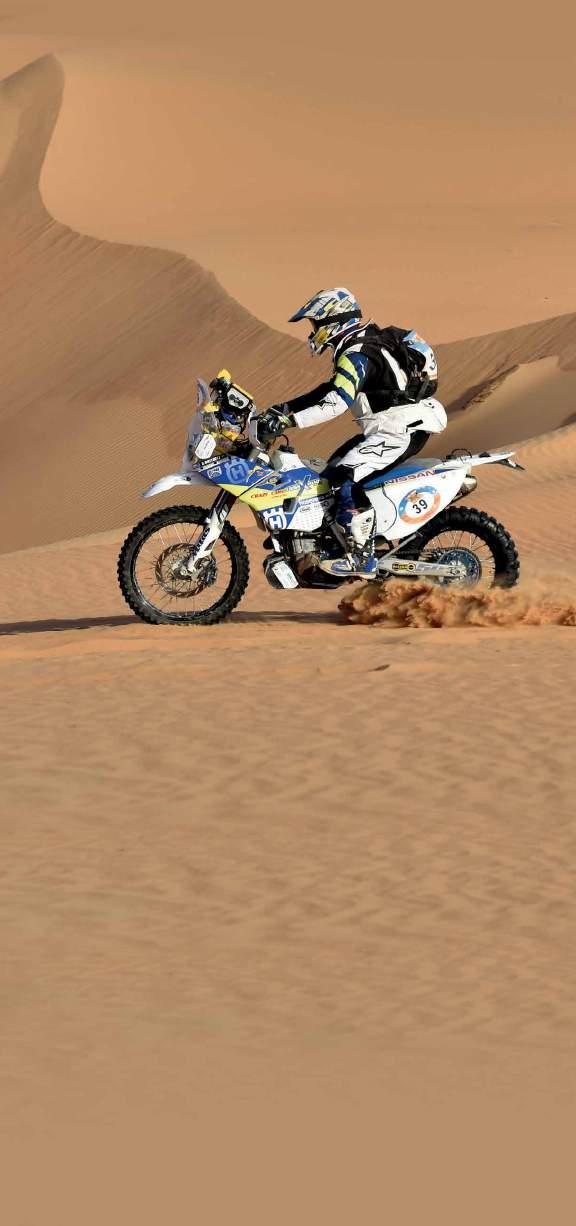



seat would still take a pillion, and the pillion ’pegs were there, but we didn’t give it a try. That’s something we’ll have a look at in the future.
Details
As good as the bike was when it came to out-and-out performance, we found ourselves most appreciative of some of the less-prominent and probably less glamorous facets of the Rallye X GSA.
We’ve mentioned the quickshifter. It was super-smooth, and a tired rider can lazily flub his way up and down gears without a thought. A rider with his head full of visions of a naked Taylor Swift can shred the Bonang Highway at incredible speeds thanks to the bike’s good handling and superior electronics, and the quickshifter makes keeping the motor on the boil and carrying corner speed way easy. It’s amazing what a difference it does make.
Another thing we really liked was the lighting.
Against local advice we left Thredbo just before sunrise and made our careful way down the mountain. The lighting on this bike is astonishing, not only in range and intensity, but in width. Although we may have left a brown stain or two in our undies on that section, the exceptional lighting meant safety margins on the dark, kangaroo-infested mountain road were hugely increased.
The GPS and instrumentation meant we were never out of touch with the bike or our location, and on the 12-hour ride from Thredbo to the NSW mid-north coast – another long, single-day run – that was a real godsend.
It’s horses for courses, naturally. Those looking for a dirtbikestyle adventure bike aren’t going to be happy with a bike as big and heavy as the Rallye X GSA. But having said that, it feels quite light and very nimble for a 1200, and we can’t believe anyone who rides one won’t be impressed.
Us, we’re more than just impressed. We’re bowled-oversideways smitten.
We can only hope there’s more time on the Rallye X GSA in our future. Lots of it.
Below left: The cross-spoke wheels and tubeless set-up is eye-catching. Below right: The short pillion seat allowed plenty of luggage room. There’s a long seat available.


Web: www.bmwmotorrad.com.au.
Engine type: Air/liquid-cooled, four-stroke, flat twin with double ioverhead camshaft and one balance shaft
Bore/stroke: 101mm x 73mm
Displacement: 1170cc
Compression ratio: 12.5:1
Rated output: 92kW (125hp) at 7750rpm
Maximum torque: 125Nm at 6500 rpm
Mixture control: Electronic-intake pipe injection
Emission control: Closed-loop, three-way catalytic converter, emission standard EU-4
Maximum speed: Over 200kph
Fuel consumption per 100km at constant 90kph: 4.3 litres
Fuel consumption per 100km at constant 120kph: 5.9 litres
Fuel type: Unleaded super, octane number 95 (RON)
Clutch: Oil-lubricated, hydraulically operated
Gearbox: Constant-mesh six-speed with helical teeth
Rear-wheel drive: Shaft
Frame: Two-section, front- and bolted-on rear frame, load-bearing engine
Front suspension: BMW Motorrad Telever; stanchion diameter 37mm, central spring strut. 210mm travel


Rear suspension: Cast aluminium single-sided swingarm with BMW Motorrad Paralever; WAD strut (travel-related damping), spring-preload hydraulically adjustable (continuously variable) at handwheel. 220mm travel
Wheelbase: 1510mm
Brake front: Dual disc brake, diameter 305mm, four-piston floating calliper
Brake rear: Single disc brake, diameter 276mm, double-piston floating calliper
ABS: BMW Motorrad Integral ABS (part integral), disengageable
Seat height: 890mm/910mm
Fuel capacity: 30 litres
Width including mirrors: 980mm
Total length: 2255mm
Weight, road-ready, fully fuelled: 260kg



WATERPROOF RATING - 28,000 MM/24H
BREATHABILITY RATING - 25,000 G/M2/24H 3



Riders being denied access to gazetted public roads has been a hot topic for generations. Alex Kelly had a few thoughts on the subject during a recent ride.
Something inevitable for adventure riders is the dreaded locked gate. An individual’s style of adventure riding will depend on the likelihood of confronting this challenge, and for different trips and people it can mean different things.
This became all too clear in my last solo adventure ride from Brisbane to Bathurst.
It was early morning and I was setting off on a planned solo four-day ride down to Bathurst. The route was to include some known tracks and roads as well as some unknown trails and National Parks. Knowing my way through southeast Queensland and northern NSW saw me avoid any real issues. I tracked south over the border via Boonah, Paddys Flat and down Rocky River Road with no interruptions of any sort. It was a route well-travelled by myself and others. It wasn’t until I got further south and into some more scenic National Parks that the threat of Big Brother became apparent.
I understand some gazetted roads travel through private land, and I also understand some property owners don’t want people camping, shooting and living on their land. But I can’t understand why land owners feel the need to lock gates on gazetted roads and display threatening signs. It never ceases to amaze me how some land owners are so welcoming and some are so negative and hostile.
Just as confusing to me is National Parks charging patrons just to pass through. That was the biggest frustration I encountered.
As I was riding Rocky River Road I enjoyed turning off and taking a back trail through Spirabo State Forest. It’s a great trail for the more-advanced adventure riders and can connect with a more interesting route to Deep Water and down to Glenn Innes. This trail did

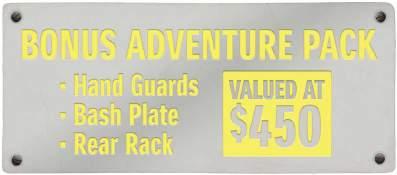



cross private land and had multiple gates, but never have I seen the gates locked or nasty signs on display. Why is this? Is it because the land owner is okay with the occasional passer-by? Maybe they don’t even know people are using this trail? Or possibly they’re just not keen to cause a fuss and let sleeping dogs lie. I don’t know, but I am thankful for the fact myself and others get to respectfully pass through without causing damage or trouble and get to enjoy the beauty there.
On the flip side as I continued my ride south I came across Oxley Rivers National Park, which was on my list of places to visit.
I admit I didn’t plan ahead as I didn’t know if I’d make it that way or if luck would have me travel a different way. I was also unaware of the obstacle and the frustration it could cause.
It was late in the day, raining, cold and I was pretty miserable. As I turned off Kempsey Road and started heading down the National Parks’ road I did notice a sign had said ‘locked gates ahead’. However, previous experience had shown that just because there was a sign it didn’t always mean there were locked gates barring through traffic. More often than not there’s a locked gate preventing access to one place, but passing through is fine.
I spotted a nice campsite on the map and headed there to set up. I was well over the day of riding in the rain and I’d
resigned myself to setting up camp in the wet. I made my way to the site, only to find a locked gate in my way and a rather rude sign notifying me I was being watched by cameras. That didn’t bother me so much. It just made me sad these types of efforts are made to keep travellers out of some of Australia’s most beautiful places.
Being recorded or not, I set up camp right next to the impassable gate, and it was evident from the charred black
Above: Why do we see these gates being locked?
circle on the ground I wasn’t the first to have the idea.
I spent the night pondering why this is the case.
The next day brought a misty morning and some interesting riding as I followed down the main trail through the National Park. The map showed one way to a dead end and another which should’ve led through the beautiful State-administered forest. At a ‘Y’ intersection I decided to check out the dead end anyway.
After a few quick kilometres I was met by another locked gate.
This one I could understand as it
Below: A very hostile vibe. u


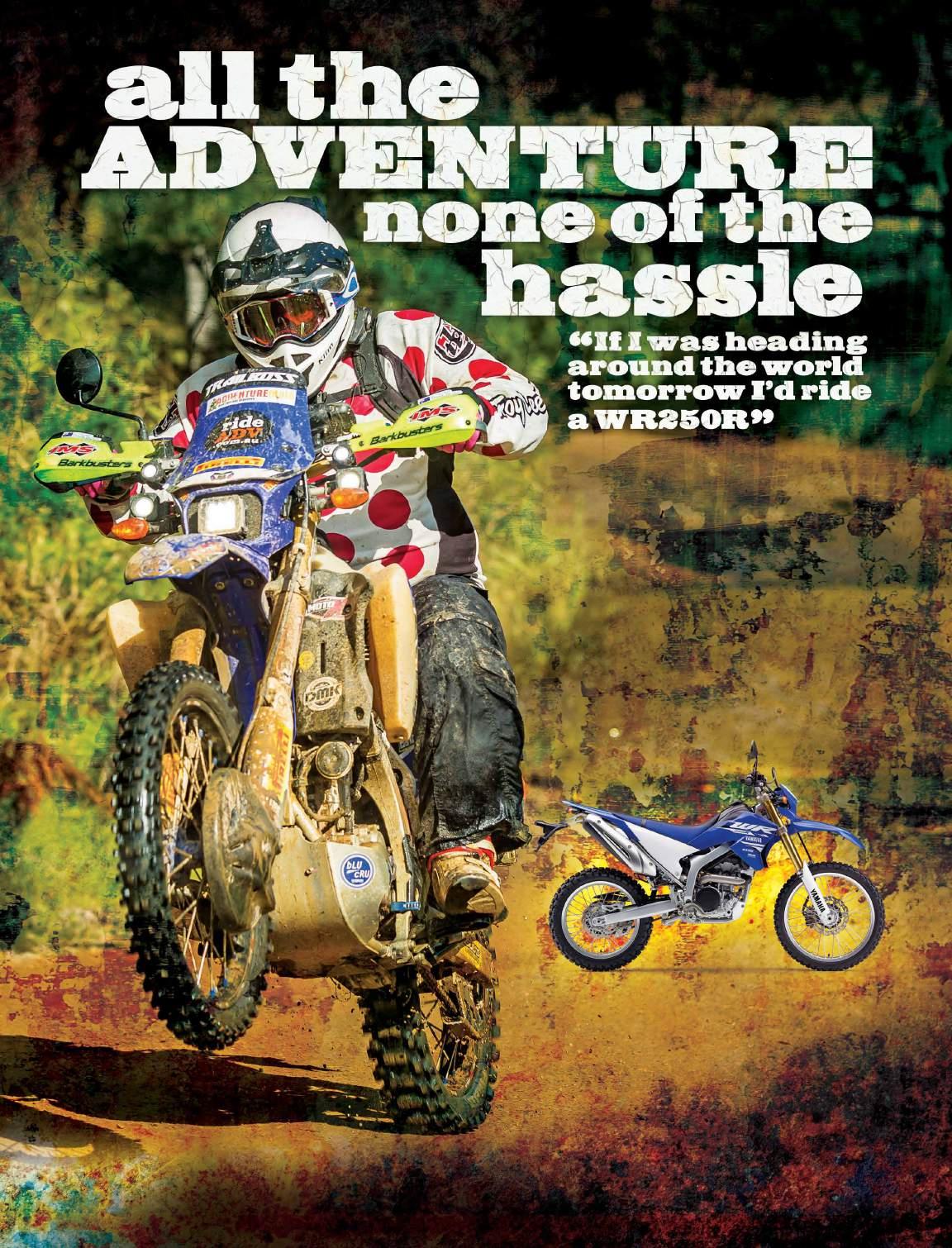






looked as though it was the entrance to some kind of privately owned and operated four-wheel-drive park. Fair enough, on the map it went nowhere anyway, so I turned around and back to the main trail.
Once back on the main trail I thought surely I would just follow through and make my way out the other side to a fuel stop and more trails. Wrong.
About 15km down the amazing trail I was stopped once again by an impassable locked gate armed with surveillance cameras (I could actually see the cameras in the trees). It seemed I wasn’t destined to ride through this beautiful National Park.
Defeated, frustrated and running low on fuel I had no choice but to make my way 40km out of the bush and a further 60km down the bitumen to my closest fuel. Why? Well, when I checked my National Parks map a little more closely, the legend for this National Park mentioned it had an entry fee. Not like a, “Hey! Pop $5.00 in the honesty box and pass through.” No. It was, “You get to travel halfway through the park to be stopped because you don’t have the code for the key box!” It was annoying to say the least.
So back I went, with a sour taste in my mouth, to find another way.
I continued further south until I stumbled across an amazing road which joined Nundle and Scone. It was 120km of pure, dirt, adventure-riding heaven. The views were amazing, bends were beautiful and
Above: Where is it okay to ride and explore?
Below: Efforts are made to keep travellers out of some of Australia’s most beautiful places.

creek crossings were lovely. However, to my surprise, there was a very hostile vibe on this road. I didn’t encounter any locked gates or obstructions, but at the entrance of every paddock, whether it was a gate or cattle grid, were very stern signs saying: ‘Private Property’ ‘24hr surveillance’ (again I saw cameras), ‘No camping or shooting’, and ‘Chance of prosecution’.
It really put a dampener on the experience. It was clearly a road with reflector markers and infrastructure, however, passers-by obviously weren’t welcome. Which begs the question, where is it okay to ride and explore?
After these experiences over the four days of riding I found myself confronted and confused. I’m no angel, and in the past I’ve bypassed a locked gate purely for the thrill of adventure and exploration. However, to have such challenges imposed upon me via merely following a National Parks trail or road begs the question: why do we see these gates being locked? Is it to stop outsiders? Or purely because someone doesn’t want to share? Is the system stopping people from wanting to come to these parts of this beautiful land to experience it? Is it revenue-raising? What are your thoughts?

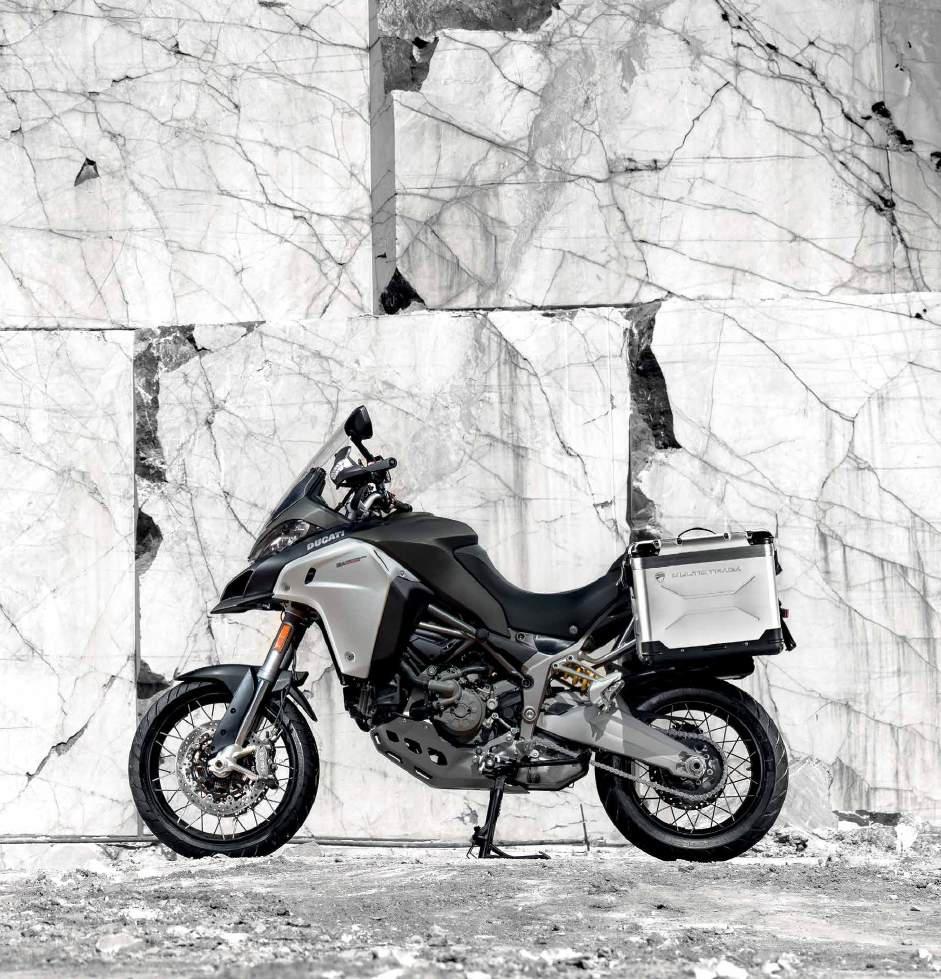
Multistrada 1200 Enduro
Wherever the adventure takes you, now you can follow it all the way. On any terrain, in any condition, theDucati Multistrada 1200 Enduro is designed to experience the journey with style, performance and technology. The 160 hp Ducati Testastretta DVT engine, 30 litre tank, 19” front wheel, spoked wheels and 200 mm wheel travel.
The Ducati Multistrada 1200 Enduro. We have given it everything, except boundaries.



One of the most anticipated bikes of 2018, SWM’s Superdual X – with the 18/21-inch wheel combo – sold so fast Adventure Rider Magazine didn’t get a ride on a bike from the first shipment. When we finally reached for the start button on the Italian dualsporter we were asked to please treat the bike nicely. The entire second shipment had sold out before it arrived as well, and the bike we were riding had been spoken for too. Now we’ve ridden the bike we can see why everyone wants one.
Left: The SWM Superdual X is capable in every department. On- or off-road, long distance or hacking through the bush, it’ll hold its own and show a rider a good time.
here’s some sort of message in the popularity of SWM’s Superdual. We’re not sure if it’s a pointer to the number of riders who don’t want to deal with the size and weight of the 800s and 1200s, or if it’s the fans of the existing 650s spoiling for an affordable, reliable bike that also offers up-specced equipment at a very keen price.
Whatever the attraction, the eagerness of Australian riders to get hold of the SWM Superdual has been an eye-opener.
The liquid-cooled, 600cc, fuel-injected single is at Euro 4 spec and offered to the Australian market as either a LAMSapproved version or the full-power rig, an adjustment made by dealers prior to purchase. An alternative throttle body and EFI mapping differentiate the two, so it’s not a job for DIYers, but SWM said the changeover should only cost around $200. That seems very reasonable, and we applaud SWM making sure the Superdual is available to everyone. It’s the kind of bike that will get learners off to a great start, but will have experienced riders fizzing at the split for the high level of standard equipment and the bike’s versatility.
As a single-cylinder adventure mount, it’s a good’n.
The motor we’ve pretty much covered, and it’s yet another incarnation of the 2011 Husky 630TE motor found on the RS650R. That’s a very good thing. The motor has proven itself reliable and it’s shown it can offer competition-level performance to people who know how to make it work.
The version in the Superdual is in a tamer state of tune than the donk we saw on the TE though, and SWM has done a great job of making the power delivery easy to use and with bugger-all vibration. Engine capacity is the same at 600cc, but there’s been a substantial counterbalancer mass added and the smoother, slightly slower-revving motor was ideal for long days and big distance. Our memories might be a little unreliable, but we felt the Superdual was little down on outright snort compared to the RS650R. When we floated that opinion as a general observation, SWM’s tech bloke, Big
u

Tall Bob Walters, set us straight. The Superdual actually has more power than the RS, thanks to the exhaust. It’s the taller gearing on the Superdual that gives the slightly slower acceleration. The payback is a longer-legged cruise, and that certainly fit with what we felt.
Aside from the motor the Superdual is built with a lot of the same quality fittings we enjoyed on other SWMs. The switchblocks are uncomplicated and feel solid and the instrument readout is an LCD unit that’s fairly straightforward. There’s only a single button to cycle through the trip meters, odo, fuel consumption and so forth, and it runs with the speed displayed as the main readout, the revs a small set
of digits in the bottom-right corner and the fuel gauge up the right-hand side. You could vary that a little if you wanted, but that’s the essence of it.
An 18-litre tank is a great inclusion. SWM claims it’ll give a range of over 400km, and there are sacrificial panels on each side to protect the steel fuel cell.
A fully adjustable Sachs shock and Fastace forks – which we’d never heard of, but are OEM suppliers to some very big names, especially in the mountain-bike
world – took care of suspension, and a six-speed box and hydraulic clutch round out the driveline.
Whether or not the Superdual has stunning looks is up to the individual. We thought it was a rare phenomenon: a bike that looked better in pics than in real life. We don’t know why. The red is very striking, the bike looks compact and ready to do the business, and the steel tank allows for a high-lustre finish. But for some reason it just didn’t grab us as we expected it to. We did give big points for the high-quality of the finish for the whole thing, and that the finish looked very robust. We suspect the Superdual will hold its looks when many flashier bikes will start to look a little tired or dated.

Top: The look of the SWM should stand the test of time. It’s not flashy or covered in bling, and we reckon it’ll wear well.
Above right: The same switchblocks we’ve seen on other SWMs.
Good-looking, high-spec gear. The extra switch is for the spotties.

Riding the Superdual is a nofuss pleasure.
The motor is smooth, powerdelivery predictable and the suspension works well. Handling is good, braking is better than good, especially the front, and after doing time on some 1200cc behemoths lately, grabbing a 170kg single by the scruff of the neck and dragging it through the bush was a blast.
Right: The front brake was especially nice. It was strong and gave plenty of feedback. u

But there were a couple of interesting niggles.
The first was the seat.
Look at the pics and you’ll see it has a noticeable dip for the rider’s bum.
When we first climbed on the bike and started riding we were uncomfortable pretty much straight away. The cockpit was just too cramped. SWM shifted the ’bars forward for us and that made a big difference – it was a very simple procedure that took probably five minutes – and that instantly made the whole bike feel much better, but it still felt our knees were scrunched up a little tight. Moving the footpegs was easy too, we were assured, but the job couldn’t be

B I ke spe C s
Web: www.swmmotorcycles.com.au
Recommended retail: $10,490 plus ORC.
Engine: Liquid-cooled, DOHC, four-valve, single-cylinder four-stoke
Capacity: 600cc
Bore x Stroke: 100mm x 76.4mm
Transmission: Six-speed
Clutch: Wet multi-plate with hydraulic control
Ignition: GET
Fuel system: Mikuni D45 EFI
Start: Electric
Front suspension: 45mm USD Fastace fork
Rear suspension: Sachs adjustable shock
Front wheel: 21-inch with 300mm brake disc with ABS
Rear wheel: 18-inch with 240mm brake disc and switchable ABS
Seat Height: 890mm
Wheelbase: 1495mm
Fuel capacity: 18 litres
Weight: 169kg
Warranty: 24 months or 20,000km parts and labour
done during a coffee break at Craigs Hut like the handlebars.
We think the dip in the seat was the problem.
The shape of seat meant the seat height was low and we could get both feet flat on the ground. Standing up was fine, and sitting with our bums on the point where the dip and pillion seat met made things much better, but it wasn’t comfortable. There’s not enough seat supporting the rider.
Vertically challenged riders will probably love it, and the taller seat from the T model can be swapped for around $200, but it still has a dip. SWM has a new ‘comfort’ seat on the way as we write this.
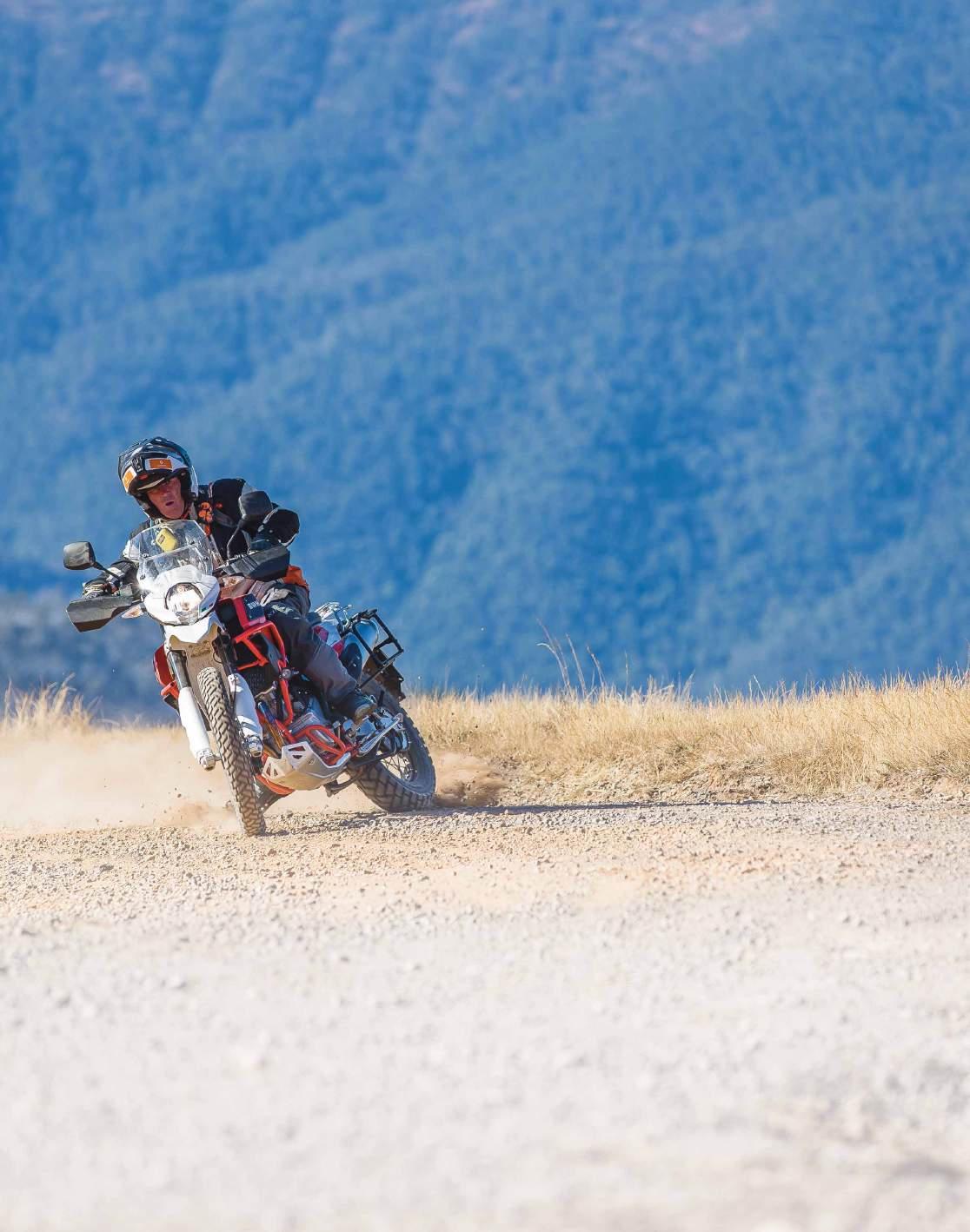
It’s being made by Dalla Valle in Italy and will have a flatter profile, so maybe those who find themselves contemplating substantial ergo changes for the cockpit should have a look at seat options first. We suspect everything would be pretty close to comfortable for riders around the 175cm mark if the seat were a similar, flatter shape to the RS650R.
But…
Braking was really good both ends, but we didn’t end up with the same high opinion of the ABS.
It’s switchable on the rear, and we felt it would be fine for about 95 per cent of riders about 95 per cent of the time. u





































But this bike is well capable of tackling enduro-level terrain, and the ABS is too aggressive. It seems to cut in at the faintest sniff of any wheel lock, and when it overrides it totally takes control away from the rider. The bike heads for its destiny with a mind of its own.
Of course, on wet roads or loose gravel that’s a good thing, but a bike as capable off-road as this one really deserves the chance to hit the tight going and tougher hills. The standard ABS set up on the Superdual will mean riders avoid those situations, and that’s a shame. In every other department the bike’s up for it.
We heard a murmur about being able to disable the ABS by removing a fuse from under the seat, but when we asked Bob W about it he just gazed off into the distance, stroked his long, blond hair and said nothing.
So we’re not sure about that.
The thing that really blew us away about the Superdual was the level of equipment included with the stock bike.
As we write this there’s a promotion running and the Superdual X is sold stock with a pair of Givi-made panniers, pannier racks and LED riding lights. That promotion is scheduled to run until June, 2018.
Aside from those goodies, the standard bike is supplied with luggage rack, handguards, sump guard, engine crash bars, tank crash bars, 12-volt power outlet, screen, centrestand and sidestand, cush-drive rear hub, switchable ABS and a remote preload adjuster for the rear shock.
That’s a huge list of very desirable accessories which plenty of bikes need to have fitted aftermarket. The bike itself is smooth and easy to ride and has everything any rider needs to cover long distances, tough terrain or commuting and trail riding, and the whole package comes at the razorsharp price of $10,490 plus on-roads.
It has to be the best-value deal of the year.



Top right: A compact, multi-function speedo/display had plenty of info, including a fuel gauge.
Right middle: The dual pipes gave the motor a nice note without being loud. Possibly the Euro 4 standard is restricting performance a little, but the motor is easy to use.
Right: The level of standard equipment is excellent, including the little LED spotties which worked well.




Bob Wozga has been pondering the separate paths taken on one of life’s single days.
The concept of alternate universes goes that in one universe you might narrowly miss being run over by a car while walking across the street to your office. In another universe, at the same time, you’d get hit by a kid on a skateboard while crossing the same street and end up in hospital with a broken arm. Or, in one universe, you’d ride free on a DR650 while in another you commute by train.
I imagined waking up on a sunny and warm Saturday. I made breakfast for myself and my wife. Then, in one universe I set out on a ride,
while in another I set off to travel to work. In an hour, one of me in Universe A was cruising south on the highway smiling at the glum faces of commuting drivers. In the other, Universe B, I pulled into a city rail station where I disembarked with other passengers and walked through tiled tunnels like cattle on the way to the market. As I emerged on to the street, cars and vans lined the curb, people strolled to their offices and a parking officer was already out collecting revenue. I arrived at my desk, pressed the button and stared out the window waiting for the PC to wake up to a new day.

In universe A I’d caught up with Greg, a riding mate, checked out sculptures in a paddock along the Old South Road near Mittagong and was enjoying a coffee in a Berrima café and planning the next leg of the ride through Canyonleigh to Taralga. Questions had been asked and needed to be answered: was there fuel in Taralga? Was there good pub food at Taralga? Should we come back via Wombeyan Caves or Goulburn? Having already fuelled up at Mittagong and topped up our bellies at Berrima, we headed south and took the Canyonleigh turnoff along the southern expressway.

We glided along rolling hills until the bitumen stopped at an information board and bus stop indicating we’d reached Canyonleigh. The gravel led west towards Paddys River. Greg recollected Paddys River was a flooded ford last time he’d travelled there and was impassable. Now it had a concrete bridge and the river was low. Further along, pine trees lined the road and wallabies scattered around us. We followed cautiously as they dispersed into the paddocks.
Coming across a closed gate, we stopped and checked our map to confirm we hadn’t taken a wrong turn. Luckily, it was just a gate on a public road. I should’ve realised when I saw the sign: ‘Please shut the gate’.
Two more closed gates came and went while signs warned us of cattle on the road. When you’re riding through private property, cows have right of way.
Hitting bitumen at Brayton, we turned right toward Big Hill. The road wound through forested hills and into open fields. This place could be scorching hot in the summer and covered in snow
in the winter. The road was in good condition and it made for an easy ride. Side roads appeared with faded street signs indicating something was down there. I couldn’t decipher how far or what it was, but I’d check it out on another trip.
Pulling up at the start of Swallow Tail Pass, a road sign warned of the substandard road conditions. We stopped to stretch our legs and have a drink.
While we did this, in Universe B I was walking into the office kitchen to make a cup of coffee after spending a few hours staring at my screen and doing reports. I bit on a biscuit and looked out the window at the people below and thought of what I wanted for lunch.
Back at Swallow Tail Pass, an old Falcon pulled up to ask directions to Taralga. We looked at the sign and the car, then pointed at the sign indicating the poor condition of the road and it not being suitable for two-wheel drives.
The driver said, “No worries,” and drove off.
We never saw him again. It was a fantastic stretch of road and didn’t look like it got much traffic as it passed a few farmhouses.
Winding down to the Tarlo River, the clay surface of the road could be a little challenging after heavy rain, but on this day it was good. A concrete-slab bridge crossed the river, debris on the banks indicated it got a reasonable flow when in flood, but it’d been a dry winter and the water was stagnant. It still wasn’t a bad spot to pull over for a snack under the shade of a river oak. Riding dirt roads doesn’t mean you can’t eat well. A cheese plate and a glass of red always goes down a treat.
Back in universe B I carried my take-away Chinese to Hyde Park to get some fresh air over lunch. People relaxed in the park, taking in the sun and enjoying their packed lunches. There’s always a whole range of people going through the park during lunch breaks. u
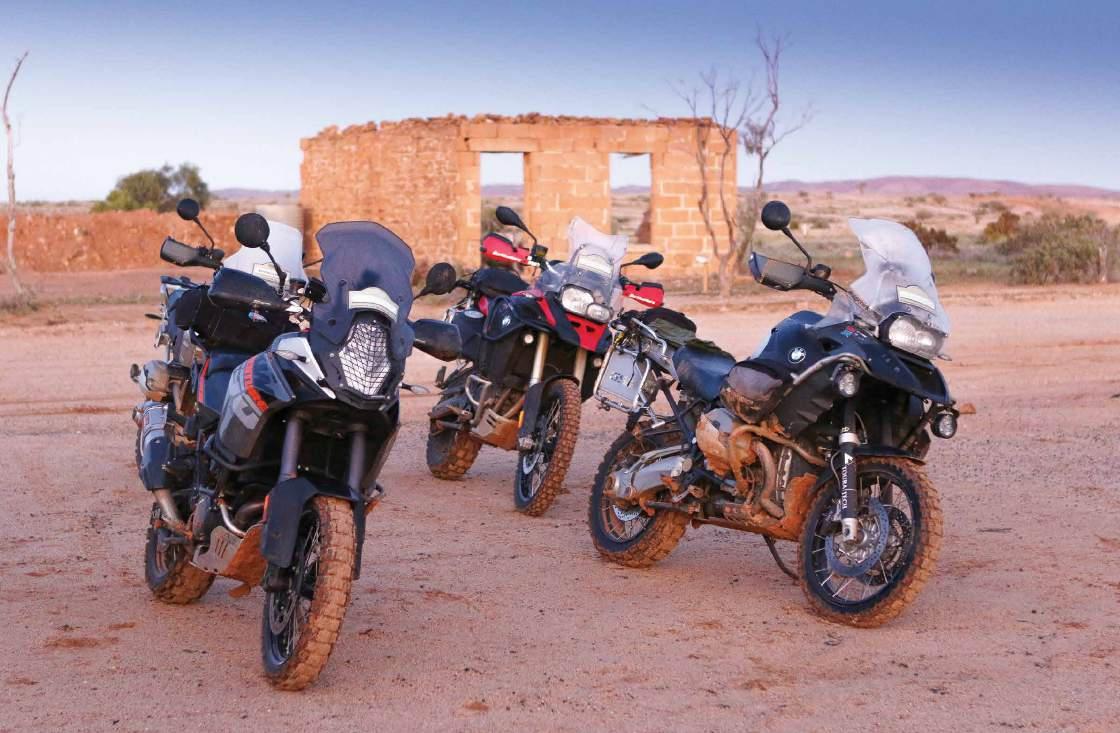

In Universe A we rode out of the canyon and the fields catered for a new generation of farming. Cattle stared at us as we gazed at the blades of giant wind generators planted in the pastures. Slowly rotating on the hillsides, almost as silent as the cattle grazing, the blades generated 106.8Mw of electricity that’s bought into the national power grid while the cattle produce methane. Whatever your opinion on the wind generators, the 51 turbines are an impressive engineering sight both from a distance and up close.
The sandstone oasis of the Taralga Hotel sat toward the southern end of the main street. Lost in time, Taralga has the charm of a laidback village with historically significant buildings dotting the town. As we eased back and enjoyed a beer – a man is not a camel – more bikes rolled up to the hotel. It seemed to be a popular establishment. As to the questions that needed to be answered: yes, Taralga has a good pub. Yes, there is food – the pizzas in the pub alone are worth the ride – yes, there’s

fuel. However, as the locals informed us over a chilled ale, “We’re on Taralga time. The bowsers are closed from midday Saturday and closed on Sundays.”
A dog barked in the distance while Jethro Tull’s Aqualung played through the pub speakers.
Over in Universe B the phone rang and a client needed tests done on their internet service as their modem kept dropping out. I found there was a battery fault and sent a field tech.
In universe A Greg and I decided it was too late in the day to tackle the Wombeyan Caves Road and headed to Goulburn instead. Wombeyan Caves is best done over a weekend where there’s time to explore the caves. We decided to organise a trip with the rest of the lads when it was cooler.
Heading north from Goulburn, a quick detour off the expressway took me through Marulan.
The town is now bypassed but still holds a school, railway station, general

store, pub and a couple of novelty shops to try and draw travellers. It’s still the main service centre for the surrounding farms and communities.
The Royal Hotel gave a rough indication of the age of the town – 1880 – and the buildings were good examples of Victorian architecture. We don’t seem to place as much importance on our history as the Europeans do for some reason, and it’s encouraging some smaller towns set out to preserve their buildings and individual character.
It was well worth the visit through the town.
Heading back to the expressway towards home, the sun began to set over the hills, the soul felt so much lighter after a great day’s ride and the line of traffic in front no longer frustrated me at all.
Back in Universe B it was the end of the day. The rail station was almost empty and the light faded as I walked the last leg home.
Maybe there are parallel universes. I know which I’d rather be in.






















Urals offer more of everything. More comfort. More wheels. And way, way more adventure. No matter how wild things get though, Ural riders always seem to end up smiling. Adventure Rider Magazine’s editor had some first-hand experience.
and images:

Main: For comfortable, pleasurable sightseeing the Ural is hard to beat. Right: A bit of duct tape and it was good to go.
ou’re not going in there, are you?”
I stared in disbelief at Rocky Creek Designs’ main man Greg Jansen. He squinted at his GPS, pointed at the screen and replied, “That’s what it says here. Turn left.” Greg seemed to feel that should put any doubts to rest.
Sitting on my Ural sidecar rig I glanced over to see the reaction of Ural tech Mat Hodge. He seemed pretty comfortable about the whole idea. He was one of those blokes who never seemed to panic or get excited. I’d already piled my Ural Sahara – a unit on loan from Ural Australia – into a dirt wall and done a considerable amount of damage. When Mat arrived on the scene he grabbed the shattered crash bar, removed the remains of the rocker cover, shrugged his shoulders, duct-taped the whole thing back together and said, “Let’s go”.
He might’ve raised his eyebrows a tiny bit when a large chunk of the rocker cover dropped into the pool of oil in the dust underneath the bike, but that was as close as he came to worry as far as I could see. A trip into some unknown terrain clearly wasn’t going to bother him much.
My reluctance to head down the indicated trail wasn’t based on solid fact. I thought I remembered riding the trail some time ago – probably several years before – and had a vague memory that it could get rough in places, but I wasn’t sure. It’d been no big deal on my 650 single as I recalled, but trying to adjust to the three-wheeled world had proved a very interesting and trying time for me. I’d loved the comfort and amazing carrying capacity of a sidecar and I was thrilled with the comparatively low cruising speeds and sensational
u


sightseeing we’d been doing. But at the same time I’d nearly pooped my pants surviving a dozen or more near misses before I finally got everything wrong and did the damage.
So by the time we were making our way along the rough and tumble of a trail down into The Cells near Port Macquarie in NSW I was like a teenager losing his virginity: I only half knew what I was doing but it was a little bit scary, mostly awesome, and I was going as fast as I could.
The trail quickly began to descend. Mat seemed to be enjoying himself and managed some smooth lines as I smashed and pounded my way along the trail and over the small erosion mounds. Then, just as things looked to be getting interesting in a steepish, downhill kind of way, the spare wheel attached to my sidecar came loose. There was an insane amount of flapping and thunderous

clatter as I pulled the Sahara to a halt and tried to figure out what damage I’d done this time.
A slippery slope
It only took a short glance to see where the trouble was. I hiked back up the trail, found the retainer nut and large washer, returned to the bike and put everything back in place, zip-tying the nut to make sure it wouldn’t happen again.
That stop turned out to be the luckiest thing that happened to me on that day.
With the spare back in place and secure I carried on at a more sedate pace, bulldogging my way down a loose slope to where Mat had stopped on a small ledge. A rock had dislodged his muffler and he was waiting for it to cool down enough so he could bolt it back in place.
The toolkit in a Ural is amazing. It has to be one of the best manufacturer-supplied kits in the motorcycle business. Between Mat’s calm competence and the range of available hardware the muffler never stood a chance. It was back in place and ready to go in no time. Piece of cake.
But as the clamp-screw holding the muffler to the header was being given a final half-turn for luck, what should appear of over the rim of the ledge but Greg’s bright-red, steam-coming-outhis-ears face.
“It’s getting a bit rough down here,” said
Above: Rocky Creek Designs’ Greg Jansen. He has the film-star look and is Australia’s most enthusiastic Ural rider.
Australia’s most enthusiastic Ural rider.
The fact he was standing upright and only his head was visible above the trail wasn’t a good sign. Neither was the thought we hadn’t heard his motor for quite a while.
On further inspection the situation was clear.
The hill had become fudging steep, the surface loose, and only either a very brave rider or a goose would’ve tried and take a sidecar down there. And the flat section where Greg’s Ural had pulled up was only a short reprieve before things became a whole lot nastier.
Some tough decisions had to be made. With no clear knowledge of the trail in front of us, it was decided to turn back.
Even with three big, brawny blokes in their prime the attempts to get Greg’s three-wheeled fun machine up the hill were doomed. The Urals are strong, but they’re heavy, and when it looked as though the whole rig was going to tumble sideways down the slope jocks were soiled and common sense kicked in.
Greg, an eternal optimist, was sure there’d be a track at the bottom where he could just ride along beside a river and join up with the main dirt road. That wasn’t the situation as I remembered it from my previous visit, but what choice was there?
Greg pointed his Ural at the downhill while Mat rode both the other rigs up the initial part of the hill – a spectacular feat that had me so paralysed with fear I didn’t get any photos. And I was only watching.
Left: Ural Australia’s Mat Hodge is a happy bloke who doesn’t easily get flustered. u


On a two-wheeled bike the hill would’ve been a challenge, but not serious enough to stop a ride. On the Ural everything was magnified, including the riders’ enjoyment.
And that’s the weird thing.
It seems Ural riders think everything is ‘awesome!’ They’re always smiling, no matter what’s happening.
Mat managed to knock his muffler off again and decided to ride without it until we were back on smooth dirt roads, the motor on my bike was still held together with duct tape and silicon and we’d lost a rider, but it still seemed everyone was having a great time. I admit I was having a ball as well. There’s just something about a Ural that makes a rider feel that way.
Things became a little uncomfortable when Greg failed to reappear. He’d sent a couple of text messages saying the terrain had become worse, and that he couldn’t find a way out of the valley, but then all communication stopped. We were unsure if it was because Mat and I now had no phone signal, or if it was because something nasty had happened to Greg.
The silence, as the saying goes, was deafening.
An emergency phone beside the road put us in touch with the local police who, after some careful questioning about what we’d seen and what the corners had looked like, reckoned they knew the trail we were talking about. With some ground
and a wealth of local knowledge
there was phone signal and people could be contacted and help organised if needed. I checked in to the only accommodation for miles around and soothed my worries with a hot shower and numerous cups of coffee, tea and cold drinks.
It’s always tough for the ones left behind.
About 8.30pm Greg and the police, full of stories, still cheerful and bursting with adventure, arrived, apparently none the
worse for wear. Greg’s Ural had had to be left in the valley, but no-one seemed worried about that. In fact, it quite seemed as though everyone was looking forward to going back in there with the right equipment and getting it out.
That’s how it happened.
Mat spent the night at home, Greg and I stayed in the accom at Gingers Creek and I rode back along the Oxley highway to return the bike the next morning. Greg’s Ural was back on the tarmac with no damage on no fuss by mid-morning, and within a few days I’d received a text saying Mat and Greg were heading back to The Cells with winches on board, and would I like to join them having another crack at that valley.
You know what?
I can’t wait!
That’s Urals for you. They’re different, but they’re awesome.

Above: “It’s on the GPS so it must be okay. Follow me!”
Below: Not as bad as it looks. The junction of the header and pipe is under the frame, road-bike style. A rock sticking up from the trail nudged the collar back. Repair is only a matter of letting things cool down, swinging the pipe back into place and retightening the collar.



In issue #23 we rode a trio of Africa Twins and thought the stock suspension was good. Then we rode a couple where the suspension had been sorted and tuned by Nick Dole at Teknik Motorsport and we were amazed that what seemed a good stock set up could be improved so dramatically. Nick was happy to share what he’s learned about Honda’s dualsporter…
Words and images: Nick Dole
In the last 10 years, the DR650 was king of the hill in terms of the number of bikes where we upgraded suspension. That’s changed in the last six months. We now do more of Honda’s Africa Twin than any other bike. It’s not because it’s bad stock, it’s just there’s 400 bikes rolling off dealers’ floors each year.
It’s selling well, lots of people love them stock, and lots get modified.
We do everything from changing springs, modifying
OEM fork and shock internals, fitting Öhlins, Nitron and Andreani cartridges, to complete Öhlins forks, Öhlins shocks and now TFX shocks.
There are a lot of companies making AT suspension components.
How does a typical AT phone call go?
It’s varied. Remember a LOT of people buy this bike and love it stock. I get everything from, “I read on the internet I should get it done,” to, “I bottom it so

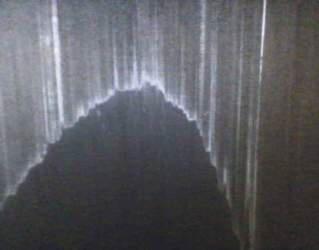
hard I may be in need of spinal fusion soon.” Clearly we are dealing with a wide range of riders and uses.
If the caller is lost, just wants an improvement but doesn’t know why, asking what they use the bike for usually reveals why they are calling. Typical responses with my suggestions to no-cost remedies are:
* “The forks are too soft and dive a lot.”
Okay, have you adjusted the preload? The stock fork has very little internal preload and you can make the fork sit a lot taller by winding eight to 10 turns on the blue preload adjusters on the fork tops. I’d suggest running the rebound adjusters on the fork caps at 1.0 turn out from full hard and the compression adjuster at the bottom five clicks out from full hard.
* “The shock gets hot and fades.”
The AT has what I’d call a very active

shock. I’ve heard the complaint before and done shock dyno tests at 30 degrees to 120 degrees. The shock doesn’t fade any more than any other shock. It’s just the level of damping the shock provides stock is very low, so any heat diminishes the damping and you quickly get out of ‘the window’. Try running your rebound adjuster at three clicks out from full hard and see if the problem is still there.
* “I have to run the shock preload at full hard all the time. I’m only 120kg. How could they have built a bike so soft?”
(Supressing laughter) The manufacturer has to target a weight range when it builds a motorcycle. The stock rear spring isn’t suited to a 120kg rider plus some gear. The shock’s damping targets aren’t meant for a stiffer spring so we’re really looking at spring and damping changes.
So, what to do? Lets cover the OEM shock and fork because it’s the most popular to modify.
The stock fork is a Showa 45mm USD unit. It’s closer to a late-80’s Honda motocross bike than a 2018 CRF450R, but that still puts it above, or at least on par with, its sales rivals. The stock springs are 0.54kg/ mm – 0.56kg/mm progressive. That’s not a bad stock spring to have. A few shock dyno runs and some riding unearthed who Honda designed the bike for. It’s made to be comfortable and do everything. It’s not supposed to be a CRF450R. The fork is approximately 30 per cent lighter in compression damping than a KTM 1190R while having a similar spring rate, so it’s aimed at a rider who wants a


softer feel. As I said at the start, many AT owners love their bike.
This is what we do for riders who want more performance and are happy to forgo the soft feel.
Our modifications to the stock cartridge are aimed at giving more damping support, so you lose the floaty feel. Brake dive is significantly reduced and feel is improved. You get more feedback so you know where the front tyre is.
Getting some air becomes fun, not so much an exercise in crashing back to Earth.
I don’t change the stock springs for riders under 100kg. It’s a lack of preload that causes the sag, not a light spring. For heavier riders we offer linear springs in 0.60kg/mm, 0.70kg/mm and 0.75kg/mm.
What can’t the stock cartridge do? It’s limited on preload adjustment to

only 10mm. Öhlins has 18mm. The compression adjusters at the base are quite ineffective. The rebound adjusters only have a small usable range, half- to 1.0 turn out. They may have three turns but the adjustment it too coarse.
The internet had a meltdown over AT upper fork tubes wearing the anodising off where the lower fork clamp is. There was lots of talk of overtightening the lower clamp and causing the wear. We measured it, checked every set of AT forks that came in the door and talked to Honda.
First, it’s not as widespread as the rumour mill claims.
Second, the wear is above the lower clamp, so it’s not tightening torque. The wear happens on the front of the tube so it’s the pressure of the bush causing the wear. If you spin the top tube 180 degrees the wear still happens at the front.
Third, the riders who seem to have the most issue are road riders where the fork sits in one place for a long time. Off-road riders don’t seem to have near as many issues.
Our answer to this is a performance coating called Kashima coating. It’s only available in Japan, and consists of lubricating molybdenum disulfide deposited via electrical induction into the billions of micro-pores on the surface of hard-anodized aluminum to provide better lubrication and less abrasion and wear. This process can take some time to get done due to shipping times in Japan. We have six sets of exchange Kashima-coated fork tubes in stock to allow a fast turnaround because no-one wants to have their bike in pieces for long periods of time.
In order for Kashima coating to be performed the fork tubes must not have any significant scratches or gouges. Kashima is microns thick and it won’t fill holes.
Of course another option is to get a complete aftermarket fork such as the Öhlins CRF1000L Africa Twin Adventure fork.
The stock 46mm Showa shock is not a bad unit, but it’s set up very lightly
Below left: The bar graph for the Africa Twin shock.
Right: The stock 46mm Showa shock is not a bad unit, but it’s set up very lightly for road touring with an emphasis on comfort.
for road touring with an emphasis on comfort. Although the shock spring rate (8.3kg/mm) is okay for an 85kg rider (according to the Australian Bureau of Statics the Average Aussie Male in 2013 weighed 85.9kg. Add on 10kg of riding gear, hydration system and possibly some luggage, plus the fact we aren’t all average, there is often a need for a heavier spring), the shock spring preload needs to be increased dramatically to help keep the ride height up.
Generally our first step when we get a shock is to listen to a wide variety of riders, what they think good and bad, then run the shock on the shock dyno and identify the rider feedback in the graphs so we know what we need to concentrate on.
Part of our testing process is benchmarking against aftermarket shocks to see where their R&D took them. Remembering some riders are very happy with the stock shock we can end up with two or three settings that give different damping characters depending on if the riders are mostly road touring with some gravel, mostly adventure touring, or riding it like a CRF450R.
The downside of the stock shock is an ineffective compression adjuster and a spring preload adjuster that’s stiff to turn for springs heavier than the 8.3kg/ mm stocker. The 9.0kg/mm we often use is okay, but a 9.5kg/mm or 10.0kg/mm

shock spring makes adjustments hard. It’s 1.0mm of spring preload for two adjuster turns. The Öhlins unit, by comparison, is three turns of the adjuster per 1.0mm of spring preload, so it’s easy to turn with any spring.
We’ve done some extensive experimenting with stock preload and here’s a snippet of our results. To help you interpret the graph here are a few key points to be aware of:
R If you have the bike up on a lift, the suspension is ‘topping out’ – completely hanging free. This is called the ‘free length’ and it’s as long as your suspension gets
R Now if you put the bike back on the ground, the suspension will drop a little due to the weight of the bike.
The amount it drops is called static sag
R And if you then sit on the bike, the suspension will drop some more due to your weight. Even further if you carry a lot of gear. The amount the suspension has dropped from the free length is called the rider sag.
A ‘classic’ sag setting is 10 per cent
shock travel for static sag and 30 per cent shock travel for rider sag, so here are the numbers for the CRF1000F: a total of 218mm shock travel, so an ideal static sag of 21.8mm and an ideal rider sag of 65.4mm.
As you can see from the graphs, the sag from stock is excessive. With no preload on it, the rear suspension is almost a third of the way through its travel before anyone even sits on the bike. When it’s weighted up, with so much less shock travel to absorb any big ruts and thumps, the shock skips around and gets harsh quickly. We have added a spacer/ collar to the spring to increase the initial pre-load, and now it’s much closer to classic ride-height numbers, leaving more shock absorber travel and a useable preload adjuster.
Simply, use the stock spring for a rider under 80kg with no gear, a 9.0kg/ mm spring for most riders up to 120kg, 9.50kg/mm and 10.00kg/mm optional, depending on luggage. The Öhlins comes with a 95N (about 9.5kg/mm) stock.




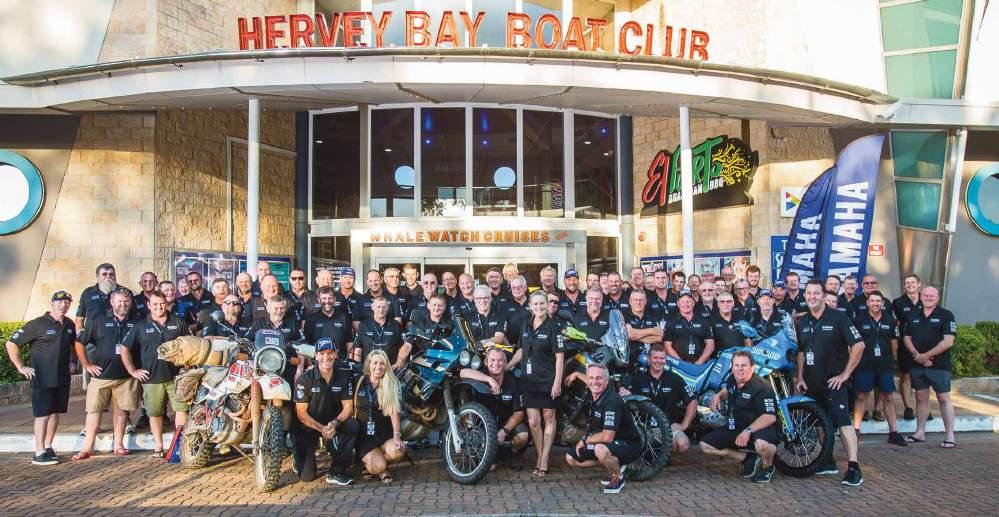


The first full week in March is the traditional timing for the annual Ténéré Tragics Run. It’s a time where as many as 75 riders, including Yamaha and industry sponsors, mount up on the Yamaha model with the big history for a week of celebration. Mike Haysom feels the event is like a large family gathering.
Welcome
Ténéré Tragics kicks off with a welcome dinner where everyone gathers, chats and gossips about the year past, latest mods
and ‘getting-there’ stories. Following the typical pattern, the riders assemble in front of the start venue for a group photo shoot. This year wasn’t normal, though. As photos were being taken, a hooligan on his bike roared toward the assembled throng. Everyone’s jaws dropped when it turned out to be fellow Tragic and Dakar competitor Rod Faggotter on a sparkling Yamaha Ténéré 700 World Raid prototype.
The bike was in Australia for filming and photo shoots for less than a week, and the only rider permitted on board it was Rod. The Ténéré Tragics Run, as the

only Ténéré-based event of its type in the world, was the first in a series of global market events Yamaha HQ had agreed would form the basis for Ténéré World Raid – a short film to back the marketing push for the new Ténéré 700.
The dinner and evening was focussed on the new 700, but Yamaha remained tight-lipped about any specs or release timing.
Before final drinks were called, it was swept away to a secure location.
The ride started pre-dawn in overcast conditions and light rain and the weather followed riders into Maryborough from Hervey Bay. Minor issues started early with flat tyres within the first 10km.
Many grabbed breakfast in Maryborough before heading out through the Tin Can Bay area. Fast, open gravel allowed riders to acclimatise to surfaces that would be typical of the next few days, albeit damp and dust-free.
Morning tea was at a little café at Bellbird Creek, the local haunt of fellow Tragic, Jerry Young. There was no missing the stop. Jerry had helped to decorate the venue with Ténéré and Tragic Run paraphernalia, including an undressed XTZ750. The prototype T700 rocked up, Rod Faggotter on board, accompanied by five selected riders representing each of the major model variants: an original ’83; a mid-90s XTZ660; a current XT660Z; the obligatory XTZ750 Super Ténéré; and The King, an XT1200Z.
Professional film makers fussed about, shooting and re-shooting promotional action for the movie. It was a real treat for Tragics.
The rest of the day moved through some great sealed and unsealed roads, at one stage passing the famed Conondale motocross track. There were splendid views to be enjoyed as the roads ran along ridgelines overlooking some beautiful valleys. Lunch was in Kilcoy before heading northeast to Manumbar

Top: Phwoar! Australia’s Tragics was the first in a series of global events to form the basis for Ténéré World Raid – a short film to back the marketing push for the new Ténéré 700.
Left: Not high-tech maybe, but it works.













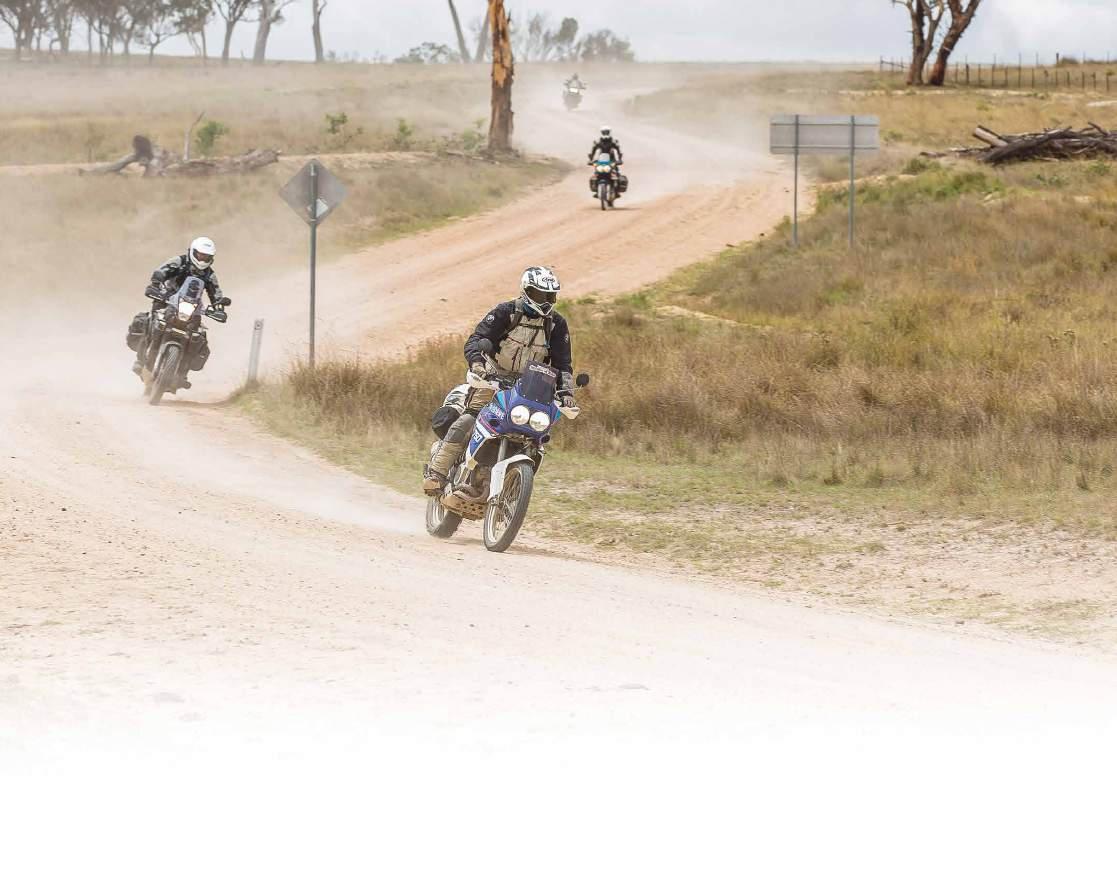
and across to Kingaroy for the overnight stop.
Aside from the initial niggles, there were few mechanical problems or even off-course excursions. The notable exception was Graeme Baker taking a slight detour into the undergrowth with his 1200. Unfortunately for Graeme, event organiser Andrew ‘Clubby’ Clubb was right behind to record the aftermath for posterity. The result was only an injured ego and candidacy for an end-ofride award.
The wet weather continued for the second day but didn’t stop the mob heading out through the beautiful, mist-shrouded Bunya Mountains National Park to congregate at Garry McCoy’s GMC Café at Cooyar. Garry was a great host for the group and his café has plenty of memorabilia from his GP and SBK days.
Out of town the back way and through Crows Nest National Park the course swept, just east of Toowoomba, through

Helidon and Ma Ma Creek, before heading to Allora for lunch. Although the rain seemed to have lessened, riders were redirected because of the significant deterioration of the course due to the heavy rain over the previous few days. The result was a fairly short blacktop trip into Stanthorpe, where everyone followed the check-in procedures.
The official Ténéré 700 activities had headed north out of Kingaroy, after the oh-so-special bike had spent the night in Rod’s motel room – yep, right next to his bed.
Although still drizzling, the weather finally showed signs of clearing on the third morning.
The improvement was appreciated. The previous two days had doubled the number of rainy days experienced on the seven previous Tragics’ tours, and some Tragics hadn’t even brought decent rainsuits.
That’s optimism for you.
Paul Sitar’s XTZ750 refused to start and was reluctantly loaded onto the sweep truck so attempts could be made later when the day warmed up. Paul then arranged to transport it from Tamworth and back to his home near Perth. A long way from home, his Super Ténéré 750 had carried him across the Nullarbor at high speed for several Tragics runs and this was the first time it’d failed him.
Through Girraween National Park and on to Tenterfield for breakfast the Tragics went. Wet-weather gear was stowed, and once on the road all Tragics finally started to dry out.
Zig-zagging the New England Highway, fuel (and a few latte) top-ups were taken at Glen Innes before heading down the ranges on the east side of the highway. Skirting Armidale, the back road into Bendemeer opened up and it was a nice relaxing trip into Tamworth.
Most of the Tragics visited either the local Powerhouse Motorcycle Museum or the Country Music Hall Of Fame.
Early arrivals had time for both.
The weather looked great and many
Top: An enjoyable stretch of gravel. Left: From the past to the future.




left early – some just after dawn – for the overnight stop in Gulgong. Some detoured for the views at Chaffey Dam, while the loop from Woolomin to Nundle had to be bypassed due to bad conditions, again due to heavy rain.
A coffee stop in Nundle prepared riders for a section through Wallabadah to Ardglen, and lunch was in Merriwa after
an enjoyable stretch of gravel across the Liverpool Range. After lunch the group cruised through the Goulburn River National Park, stopping at several fantastic photo locations.
It was a largely trouble-free day. Everyone arrived in Gulgong early and either took in some of the tourist offerings in the ‘Ten Dollar Town’ – Gulgong starred

as the background town on the original $10 note with Henry Lawson – or raided the many pubs.
Another early-morning start saw riders battling with dust and a rising sun as the route headed east out of Gulgong. Some classic, if slippery, gravel roads challenged the group on its way into Mudgee for fuel and brekky.
Heading into Sofala with its great photo opportunities via Razorback and through Green Point on the Turon River, the riders passed roadworks and headed to Hill End for lunch. The upgraded bitumen into Hill End had some game Tragics almost scraping footpegs. It was great for bragging at lunch.
A small backtrack down the blacktop had everyone heading to Yarrabin and on to Wellington for a snack, then skaty gravel toward Toongi quickly had everyone in Dubbo for an all-too-soon end to the ride.
Although feeling like one of the shortest, the fifth day was voted the best of the week. Everyone was in Dubbo, safe and sound, to get ready for the farewell dinner at a ‘secret’ location.
The dinner location was a poorly kept secret. Nearly everyone knew it was at the Western Plains Zoo.
Busses were loaded and then emptied, bars had long lines and Zookeepers presented some of the local residents for everyone to experience (or avoid, as they saw fit). The evening was enjoyed with many stories, jokes and prizes awarded to those who drew the attention of organisers in good ways and bad. It was a great way for everyone to say, “See you next year!”
Although not a Tragics tradition, a morning-after breakfast was held by Dave and Marg Readford, the Dubbo Yamaha dealer. Dave is as tragic as they come –breakfast guests scoured the vast arrays of new and used spares on the Readford’s premises, pointlessly, as it turned out. Every last one was stored off-site in Dave’s ‘secret’ place.
Truly Tragic!
Top: Classic, slippery gravel roads.
Left: That’s some serious lighting.
My ride wasn’t the one I expected.
After trailering my ’83 Ténéré from Melbourne to Dubbo, I set off to meet the group in Hervey Bay, intending to stop in Toowoomba. About 650km along the road, between Goondiwindi and Toowoomba, the ’83 rattled, lost power and, as they say, ‘failed to proceed’.
I hid the bike in roadside bushes, and as I walked back to the last civilisation I’d seen, a passer-by offered a trip to Toowoomba. I gratefully accepted. After a brief chat the offer extended to his final destination, Brisbane. “Perfect” I thought, “I can overnight with family”.
So, less than 24 hours after the bike expired, I’d slept, acquired casual clothes and was headed for the welcome dinner in a borrowed BMW X3 (nice!).
At the dinner, the Halpin family (Yamaha dealers in St.George) were aghast I’d left my bike on the side of the road, albeit behind some thick tree cover. Phone calls ensued and Halpin Senior said, “We’ve arranged for it to be picked up.”
The Tragics Runs are amazing, flowing with The Ténéré Spirit. It really is like a loving family.
The next three days involved getting back to Brisbane, flying to Sydney, sleeping on the floor in my daughter’s student digs, the XPT (train) out to Dubbo and a 200km drive to secure the bike. It was like Planes, Trains And Automobiles
I made it to Tamworth for the end of Day 3 after the bike proved beyond easy repair, and spent time with Tragic friends at the Bike Museum. While in Tamworth, Dubbobased Tragic, Colin Hayden, offered me a ride on his ‘bumblebee’ XT1200ZE (he was riding his ’83 on the final day). I quickly accepted. The arrangements were complicated – there was more driving and car movements – but still do-able. Brilliant.
The 1200 ran faultlessly for the final day and it was very enjoyable. Thanks ever so much, Col. You’re a gentleman and a legend.
I’m always blown away by the generosity of the group. It truly is the Spirit of Ténéré.











It was bigger and better than ever. AJ Morton and his Africa Twin roosted around the course.
The Touratech Challenge –or, to give it its correct title, the Touratech Travel Event, Expo and Adventure Challenge –had its third running in Myrtleford, Victoria, this year.
For the past two years it’s been held in the drawcard high-country town of Bright, but not for 2018. No. This year an ‘adventure village’ was planned and required a lot more space. For the first
time camping was offered on site, and that allowed riders and spectators to socialise and take in all that adventure.
Not having to leave the grounds to attend events meant riders were right in the middle of the action all weekend.
The weekend saw a plethora of activities on offer, with over 200
participants taking the latest adventure machines from the likes of KTM, Ducati, Triumph, Suzuki and SWM for a spin. Some also tried their hands at trials riding
Above: The Hill-climb Race had riders fly up a very steep, long hill at full noise to then slalom down a rocky, grassy descent.
Below: Over 200 participants for the third running of this great event.
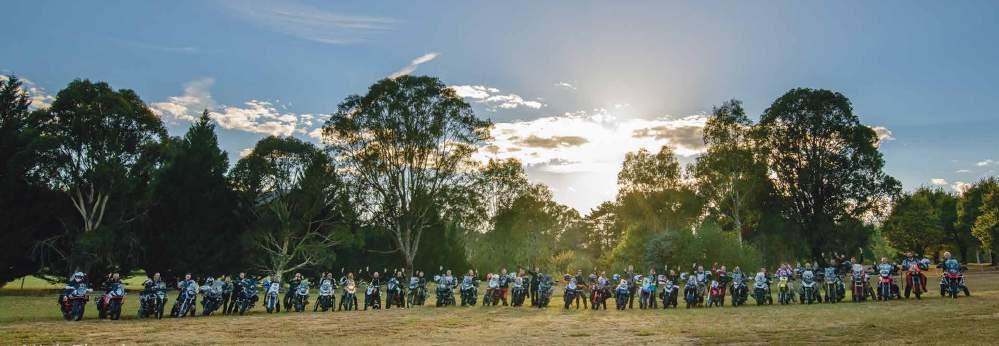

with Trials Experience, and spent big on expo-discounted quality accessories on offer from Touratech and more.
But let’s be honest: we were all there for the main event – the Adventure Challenge.
This year the Adventure Challenge was again hosted by the passionate and experienced team at Maschine.
Above: An awesome weekend that doesn’t put any pressure on the brand of bike you ride.
Below: Heave, wallaby!
The 2018 event was hyped up to be the best one yet, right from the completion of the previous year’s running, with the promise of more challenges to suit all skill levels, a much more challenging and skills-focused finals course, and the addition of team entries.
And boy did Maschine deliver!
Having competed in the finals in all three years I can confidently say this really was the best one yet. The challenges were so varied that riders could either pick the fun ones and head back to camp for a well-earned beverage, or hit them all and make a dash for a placing. It really was a dash to get both riding loops completed by the 3.00pm cut off and we covered in excess of 160km and 32
challenges in seven hours. No matter where you pulled up or what your skill level, there was always a friendly volunteer to guide and coach a rider through the challenges.
My favourite challenge would have been the timed Hill-climb Race which saw my Africa Twin fly up a very steep, long hill climb in second gear at full noise, to then slalom down a rocky, grassy descent. The echo of everyone’s bikes blasting up the hill filled the valley with sweet sound. This was followed closely by the OK Corral, a lap around the horse yards and a chance to show off sand-riding skills and see how far you could roost it.
Below right: The author made short work of the OK Corral and qualified for the final. u





Not all challenges were fun and easy. Cutting loops around an enduro circuit was physical and there was one particular challenge that tested the very best riders with none achieving a perfect score: the Rocky River Ride. This was an up-andback, slalom-style run along the Ovens River’s very loose river-rock shoreline with a U-turn in a billabong. Riders were penalised for putting feet down, stalling or falling, Some forgot to disengage traction control and set themselves up for failure before the first pole.
With all routes leading back to base the scorecards were handed in, finalists were announced and all gathered in the stands to watch the grand-final spectacle. I mentioned earlier about the promise of a harder finals course and this year saw the addition of a balance-beam bridged over car ramps, much larger log hops and a series of big holes dug out with a Bobcat while riders were out during the day (very sneaky). One by one the top 10 riders of the day challenged themselves. There were stalls, falls and an absolute barrel of laughs that lasted throughout the presentation dinner and into the night.
Top: Big, expo-discounted quality accessories were on offer.
Above left: A chance to show your sand-riding skill…or lack of it.
Left: Challenges were so varied riders could either pick the fun ones or hit them all and make a dash for a placing.

I have to say there isn’t an event I’ve been to yet that shows the adventure spirit and camaraderie more than the Touratech Adventure Challenge. Ladies, gents, young, old…it didn’t matter. Everyone clapped and cheered each other on and marvelled at the riders who managed to ace a challenge or blitz the final.
The 2019 event has already been announced for the weekend of April 6 and 7, two weekends before Easter. If you’ve been on the fence about entering over the past three years I encourage you to sign up. It’s such an awesome weekend that doesn’t put any pressure on the brand of bike you ride, the colour of your tent or the type of beer you drink. Its a one-in-all-in adventure family that, year after year, is supported by local residents volunteering their time and their private properties to let a bunch of adventure junkies explore and experience some of the best riding locations in Victoria.

Top: The Trials Experience crew seemed to handle the obstacles well. They also offered everyone a chance to get a feel for trials riding.
Above right: A series of big holes were dug out with a Bobcat while riders were out during the day.
Right: Ladies, gents, young, old…it didn’t matter. Everyone clapped and cheered each other on.


Riding

pART 5


Last issue we left Irene and riding partner Carli on New Year’s Eve at The End Of The World. This issue Irene’s amazing journey through South America – and five issues of Adventure Rider Magazine – comes to a close.

After thousands of miles of deserted plains with sparsely populated small villages, we arrived in the southernmost city of the world to find it looked like a modern town. Ushuaia is a base for boat trips to Antarctica and treks through nature parks. It’s a port city with a Hard Rock café and numerous clothing stores, mainly focused on hiking, and even a bookstore wíth English books. It’s clearly a beloved tourist spot and offered all modern conveniences.
Whales, dolphins and penguins were some of the animals we hoped to encounter on a boat trip to Antarctica, but the cheapest option was $7600 per person. Unfortunately, that was just above our budget. Carli and I decided to make the four-hour hike to the glacier lake, Laguna Esmeralda. Although it was January, the warmest month of the year in Ushuaia, the thermometer stayed below 10 degrees and we pulled our rain suits on over our clothes. That turned out to be a good thing, because during our hiking we ploughed through deep mud and the weather didn’t seem to be able to choose between rain, snow or hail – it poured all three on us. Nevertheless, we still enjoyed the pristine, wild surroundings.

We stayed in Ushuaia for a few days waiting for a less rainy and less windy departure. When the time finally came, I wore six layers of clothing: thermo gear, sweater, body warmer, inner coat, outer coat and a rain suit. I felt like an exploded Michelin doll, but I was glad for every single layer when we left and had to beat against the strong wind.
This route surged along the Andes and the border between Chile and Argentina, and the first section led us via an offshore coastal road to Porvenir in Chile. It was a lovely, deserted, gravel road with the ocean just two metres from us.
Above: Carli’s bike was blown over and a man with a camper had stopped to help.
Getting to the border of Chile didn’t take long, but crossing it took ages because we had to get in a long queue. For the ride back through Patagonia we decided to follow the route from a Dutch motorcycle travel company, Motortrails.
Black-and-white dolphins jumped playfully up from the water during our ferry crossing from Porvenir to Punta Arenas and I managed to capture them with my camera. I called out to Carli, but they were gone in a heartbeat so she missed it completely.
Below & below left: Perito Morino, one of the few glaciers in the world which is advancing instead of retreating. u
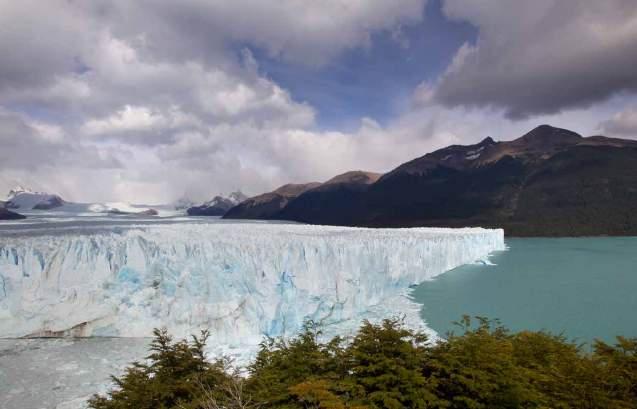
From Punta Arenas we took a boat trip to Maria Magdalena, an island inhabited by a huge number of
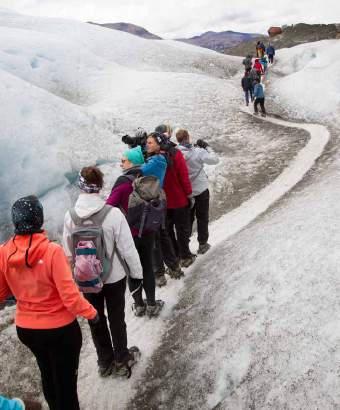















penguins. I have to get used to these purely tourist attractions. Having said that, it was one where nature came first and tourism second. There were penguins everywhere. I couldn’t help but smile at what seemed the comical antics of the birds.
The mossy island was completely pierced with holes and pits – the homes of the seabirds. The breeding season had just finished and half the island consisted of young, fluffy, grey penguins. Tourists can make a trip around the island and have to stay within a roped-off path. The penguins can cross the path whenever they feel like it. Most penguins don’t seem to mind the visitors, and some even seem to enjoy it and strike one pose after another for the countless cameras.
Next stop was Puerto Natales, near Parque Nacional Torres del Pain, the most beautiful nature park in Chile.
Chile is the longest country in the world and seems to be made up of countless nature parks, each more beautiful than the other. It’s the ideal holiday country for the hiker and nature lover.
During breakfast our bike alarms kept on activating, caused solely by the
powerful wind and we should’ve taken it as a warning. No, it was much more than that: an obvious threat.
Fortunately on the first day we didn’t have to cover a huge distance, only a short trip to the ranch where we were set for a six-hour horse ride overlooking Torres del Paine.
The traffic signs indicated a maximum speed of 70kph and for the first time I understood why and obeyed, simply because I didn’t dare ride any faster. Due to the strong wind, we continuously rode as if taking a sharp turn, even though the road was as straight as a line. As long as the wind remained the same strength and direction, all was well. Unfortunately this wasn’t the case and unpredictable
wind variations yanked us the one moment to the left and the next to the right. There was no telling what would happen, which made riding very difficult. We skated across the road like two deers on the ice. I couldn’t wait for the moment when we could exchange bikes for the horses and hoped with all my might the the wind would die down the next day. Suddenly, something black flew by. What was it?
It turned out to be my left mirror, broken solely by the force of the fierce wind. Three mirrors down and one to go was the state of play. The only mirror still in place was my right one.
Saddle saw
I was kind of sorry when we got on the horses, who had to struggle in the
Right: Ushuaia is a modern city, a surprise after the sparsely populated and thinly distributed towns and villages of the ride south.





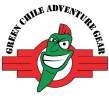



violent wind with us on their backs. But what a pleasure it was, riding through the rugged landscape in between huge herds of guanacos, ostriches, armadillos, sheep and countless different birds. We were over the moon to see no less than 11 circling condors. We’d already seen many guanacos as we rode along Ruta 40, some very close, but from the back of a horse it was a totally different experience. For the first time we heard them calling to each other, the movements as they ran away and the sound of their grazing.
When we descended a huge, steep slope which even our horses had trouble with, I suddenly understood why we’d had to sign waivers to safeguard the owners from any liability. If the horse had slid there, or we’d fallen off, we’d tumble over steep rocks down about a kilometre to end up in a shallow river, also full of big boulders. It wasn’t a nice prospect, but I had complete confidence in the animals
and rightly so: they brought us down safe and sound.
We crossed the river, rode through a small forest and dealt with another steep mountain range. Mostly we were in single file because the surface was either too steep or too irregular, but on a few flat parts we enjoyed a delightful gallop. It was a perfect way to enjoy the unspoiled nature in the best way possible. I can recommend it to everyone.
The first thing I did the next morning was to look out the window. Even though the curtain was still closed, I could see the shadows of the trees swaying back and forth. It wasn’t a good sign. The wind wasn’t easing. We would have to defy it yet again.
We left Chile to cross into Argentina once more. When I wanted to take a picture of the border sign, it was only possible if I stayed on my bike. To get off wasn’t an option because of the cyclonic wind.
At the Argentinian border we parked the bikes out of the heaviest gusts and a customs officer confirmed it was blowing hard, but told us we’d be out of the worst after about 100km. I was looking forward to it. We considered ourselves fortunate, because despite the difficulty of the riding, the wind was manageable.
But the strength of the blow continued to increase as I rode past a gas station we couldn’t afford to miss. I rode into a pebbly bank to U-turn and struggled not to get blown off my bike. Which was exactly what happened to Carli. Her motorcycle was blown over and she rolled off.
I wanted to help her straight away, but couldn’t park my bike anywhere where it wouldn’t get blown over as well. Then we’d have been no better off. I saw a guard rail and quickly made my way over and leaned the bike against it.
Meanwhile, an older man with a camper had stopped to help Carli. At the service station, through the window, I watched another rider go past very slowly and park his bike just like I did, against the guardrail, to let the worst wind pass.
I was trembling on my motorcycle – that’s an understatement.
It was much worse than just trembling. Quivering is probably a better word. It was more a kind of shaking on my bike. For the first time I was really scared and couldn’t take control of my limbs. The wind was gusting so violently it forced me to keep riding more and more leaned over, even riding in a straight line. While I usually like to take corners leaning over as far as possible, the wind meant the asphalt was getting too close for me.
“I don’t like this anymore. I don’t like this anymore,” I kept repeating aloud. I would rather have pulled over by the side of the road and let the worst of the wind blow itself out. Regretfully that wasn’t an option. I almost got blown away while I was riding. I was fearful of what might happen if I stopped.
Meanwhile, I was very grateful of my remaining mirror, which allowed me to keep an eye on Carli. I was reciting the advice of motorcycle world traveler Sjaak Lucassen: “Do not fight the wind and keep your body and arms relaxed.” I wanted to, but I couldn’t.

Chile is the longest country in the world and seems to be made up of countless nature parks, each more beautiful than the other.
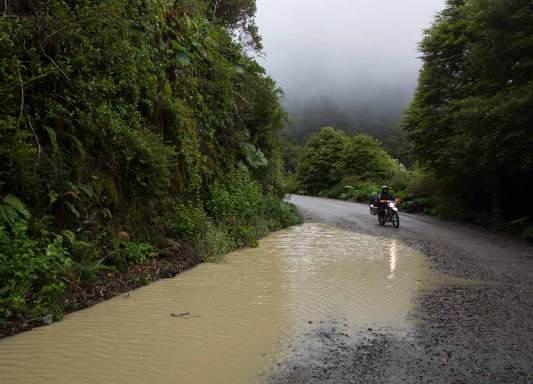
Chile is one of the longest countries in the world, closed in on the east by the Pacific Ocean and the west by the Andes Mountains. It stretches over 4300km north-to-south, but only 350km at its widest point east-to-west. This encompasses a remarkable variety of climates and landscapes. The diverse climate of Chile ranges from the world’s driest desert in the north—the Atacama Desert— through a Mediterranean climate in the centre, humid subtropical on Easter Island, to an oceanic climate, including alpine tundra and glaciers in the east and south. Earthquakes, volcanic eruptions and even tsunamis are common in Chile. Spain conquered and colonised Chile in the mid-16th century, replacing Inca rule in northern and central parts. Nowadays Chile is a republic and one of South America’s most stable and prosperous nations.



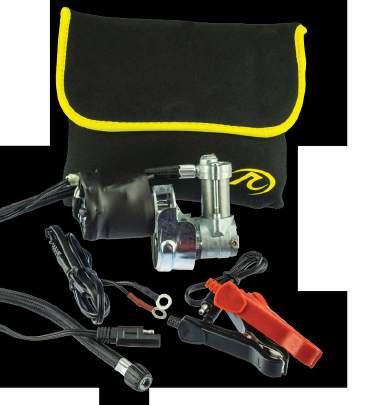

» 5 ft long, 5mm thick plastic coated steel cable
» Re-settable 4 digit combination lock
» Weighs only 570g
» Inflate a low or flat tyre quickly and safely.
Most international flights go to Santiago airport. If you’d like to visit Easter Island you have to take Mataveri International Airport.
Overnight lodgings and food are readily available along the route in the northern part of the country, including both privately owned and national chains. When you’re heading to Patagonia or riding on the Carretera Austral it’s sometimes a lot more difficult to find a place to sleep since you’re riding in a seemingly deserted land with only a few small villages every once in a while.
Ranking among the world’s ultimate road trips, the Carretera Austral runs 1240km, mostly unpaved, alongside ancient forests, glaciers, pioneer farmsteads, turquoise rivers and the crashing Pacific. Completed in 1996, it required an initial investment of US$300 million, took more than 20 years to build and cost the lives of 11 workers. Fill your tank whenever you see a fuel station as they’re a long way apart on this road. Rockslides are common, especially in winter, and landslides may close sections of road for days. Always carry extra food, water and fuel. Spare tyres are no excessive luxury as well. Besides this incredibly beautiful road Chile has a lot of paved (high)ways. The more adventurous traveler can often choose to take unpaved routes as well.
» Soft silicone cover to protect lock and bike parts


Lock your helmet, jacket, backpack, or any other accessory to your motorcycle.





This little tyre gauge will take a tyre pressure reading and display in either psi, bar, kpa or Kg/cm2. The gauge will display a reading for 10 seconds after which it will zero itself and will power OFF automatically after 30 seconds. The MotoPressor™ Digital Tyre Gauge comes with batteries installed, ready to go.
My arms were tight and I almost squeezed my fingers through my handgrips. The ferocious, jerking wind was trying to push me into the gravel and to hurl me the following instant in the opposite direction over the middle line of the road. The only good news was the lack of traffic.
“You can’t afford the luxury of being scared at the moment, I told myself. “You have to relax and stop shaking. If not, you’ll fall, because you can’t keep this up.”
I kept talking to myself in an effort to calm down. I managed to let some of the tension go and my shaking was reduced to a light shivering.
‘You can do this,’ I thought. ‘As long as I sit down and stay on the gas, everything will be alright.’
I got myself calmed down just a little bit. My next tactic was to plead with the wind: “Please die down. Please die down. At least don’t blow any harder.” Excruciatingly slowly, the kilometres passed. After about 50km my begging seemed to have an effect and the wind abated just sightly. What a difference it made! Finally I could relax. And at last we had experienced a fraction of how treacherous and powerful the famous Patagonian wind could be.
Just a tip of the iceberg is literally all you see when looking at the breathtaking view of Perito Moreno.
This glacier continues a kilometre underneath Lago Argentino. Covering 390 square kilometres, it’s one of the
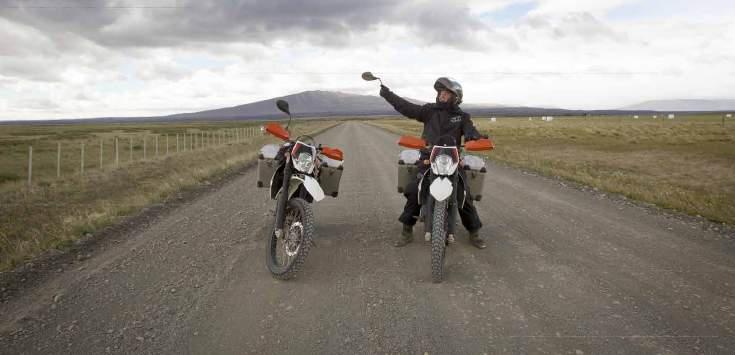
48 glaciers that together are fed by the Southern Patagonian Ice Field. This ice field is the world’s third-largest reservoir of freshwater and is advancing, while most glaciers worldwide are retreating.
We grabbed the chance to pay this glacier a visit and hear the deafening roaring and moaning while huge chunks of ice broke off and fell into the water, which is a daily event. Sometimes you can be lucky enough to witness the falling of a piece as large as an apartment building. We didn’t settle with just watching. We also strapped crampons to our riding boots to take a four-hour walk on this natural phenomenon.
The following days were pure enjoyment. All of this was thanks to Chile’s Route Seven, the Carretera Austral. From the first kilometres the sun shone and the scenery was stunning along this off-road path. The 1240km-long road along the Andes was constructed in the 1980s during Pinochet’s regime in an effort to connect the most remote inhabitants of Chile with the rest of the country.
The first day of the Carretera Austral was one big photographic party. Emerald-green rock formations, countless
Above: The Patagonian wind claimed another mirror. Three down, remaining.
Below: Lovely, winding mountain roads were accompanied by a pleasantly burning sun.
azure lakes and lovely, winding mountain roads were accompanied by a pleasantly burning sun. We thoroughly enjoyed every minute of it.
It was a great pleasure to ride on this road for the next few days, despite the weather becoming overcast with the occasional light drizzle. We looked forward to the part that would take us through the rainforest.
We’d planned about five hours to cross from Patagonia into Chile, but ended up waiting three hours at a roadblock. Finally the barrier was lifted, only to leave us waiting once more a couple of kilometres further on. Apparently it had rained heavily over the previous few days and there were many landslides.
After the 12th Argentinian stamp and the seventh Chilean stamp in my passport, we arrived in Valparaíso, our final destination and the port from where our bikes would be shipped back to The Netherlands. It was hard to believe this incredible adventure had come to an end.


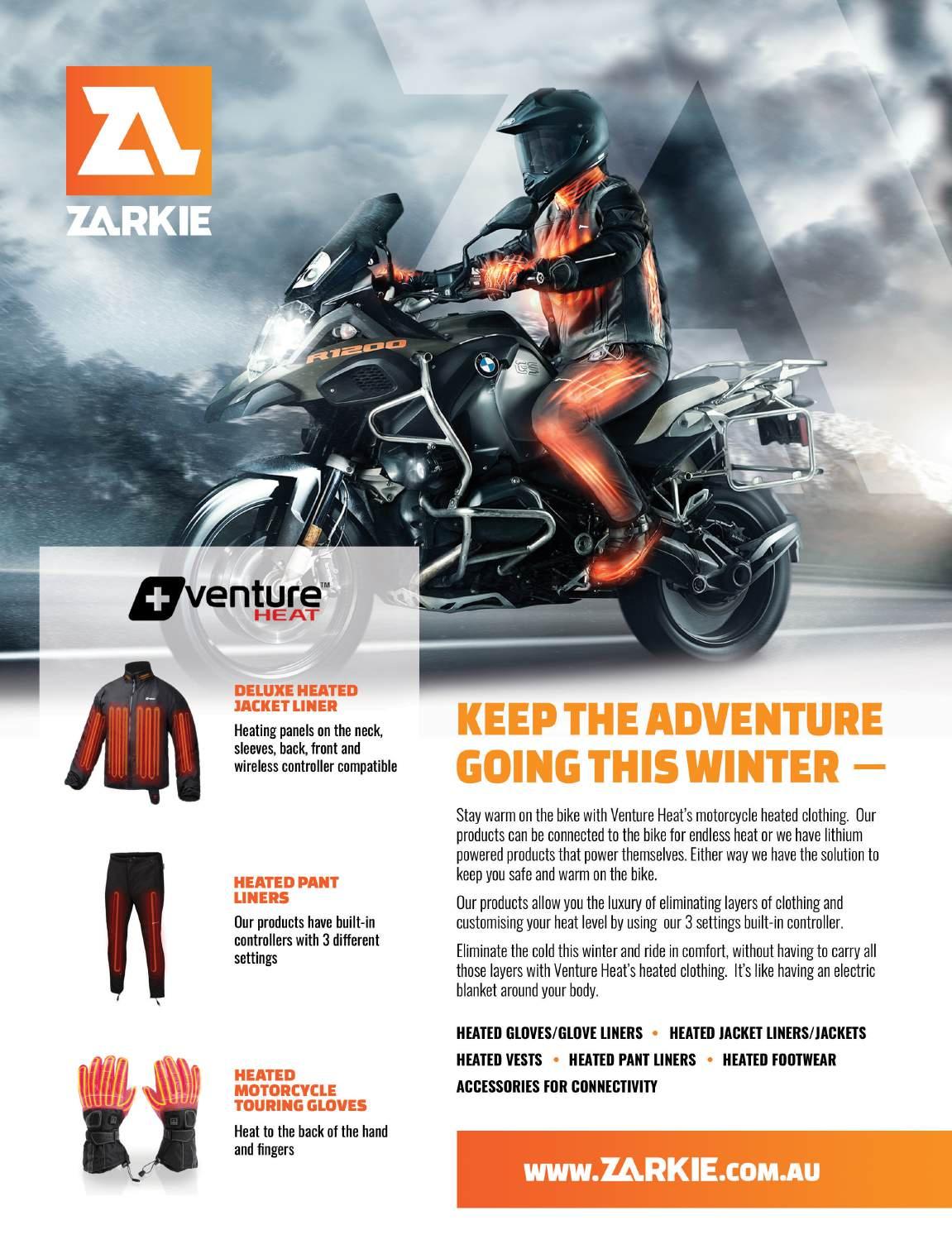

Camping with a bike’s limited load-carrying capacity presents a few unique challenges. Adventure Rider Magazine invited a few unique characters to offer some thoughts on how to best prepare for the situation. The wrinkle is, it’s real camping. No mains power and no running water. Scarier still, no phone or internet connectivity. Crikey.
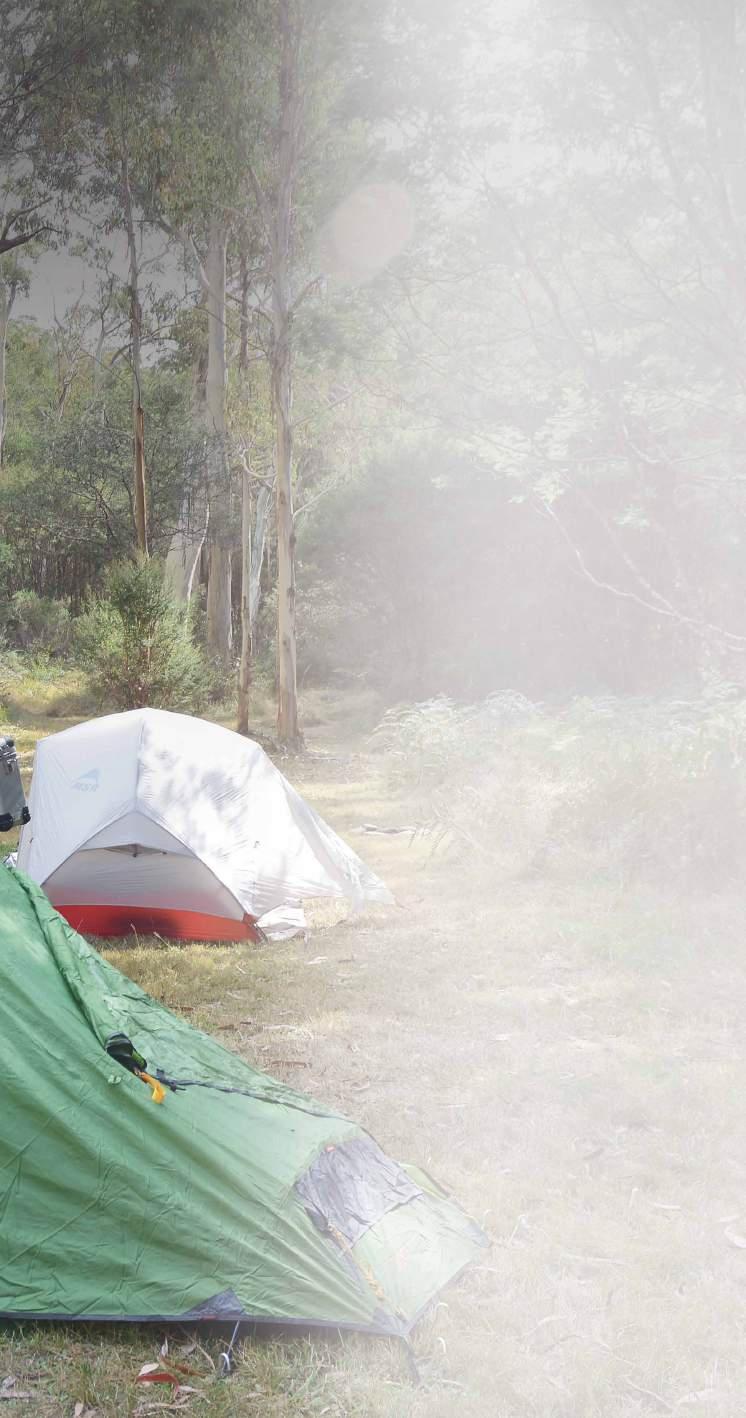


go a little pear shaped.
To camp in comfort from a bike for any amount of time requires some planning, and knowledge of the specialised equipment available can make all the difference between a dream ride and a nightmare.
For a knowledge of specialised bike-camping equipment there would be few in Australia who could match Adventure Moto’s Steve Smith, Touratech Australia’s Robin Box and Andy Stapz’z Andy White. We invited the trio to spend a few nights in the Kosciusko National Park so we could check out the gear they carried and how they carried it.
It was interesting exercise. These guys know how to travel light, but none of them settles for roughing it.
The concept was simple enough: ride in to a designated spot and stay there for a couple of days. Robin Box had long been curious about Leatherbarrel Creek, about 50km south of Thredbo, so that was the destination. It met all the criteria. There was no power, no phone signal and no town water, but the grass was soft and smooth and a creek flowed alongside. Perfect.
Each rider was briefed and a meeting time was agreed.
And that was where things began to
First up Adventure Rider Magazine’s editor set off early to ensure, as the instigator of the whole scheme, he’d be first on site and ready to greet the other riders as they came in. However, a flat tyre on the Touratech KLR proved a bit tricky and he was forced to stay overnight in Maitland until a bike shop could supply new rubber. By the time the tyre was fitted and the bike underway again he roared into the campsite just on dark. Meanwhile, heading up from the south, Robin and Andy had teamed up and were making their way north when Andy discovered his wallet had gone missing. The ensuing fruitless search and time spent cancelling cards and licence and so forth meant the Victorian pair arrived just after the editor.
Fortunately for the late arrivals, Steve Smith had cruised his Beemer in on schedule, and in the absence of everyone else had started the fire and was sitting with a book, a glass of red wine and some dark-chocolate-coated raspberries when the other three arrived.
On or off the grid, with or without company, Steve wasn’t going to waste a gorgeous, sunny afternoon in the mountains.
As everyone tumbled off their bikes, all offering their excuses at the same time, Steve calmly gestured toward a selection of pre-dinner snacks which included cheeses, preserved meats and the aforementioned confectionery.

As pulses slowed and appreciation of the tranquillity set in, folding chairs and tables were produced, water heated and tents suddenly blossomed.
Steve’s Redverz tent – complete with separate sleeping section, huge vestibule and, believe it or not, bikeparking section – was already snuggled into a premium position of course, but both Andy and Robin had elected to carry MSR free-standing tents, and when we say they ‘blossomed’, it’s because it seemed the setting up took no time at all. One minute they were in packs and panniers and the next they were up and being readied for a good night’s sleep.
Adventure Rider Magazine’s editor spent 30 minutes or so flapping around with his two-man tent, finally getting everything pegged down and guyed out just as the
others were woofing into their dinners and setting up a fledgling Australia Adventure Riders’ Industry Association. By the time TF wandered over with his cold pie carried from the Jindabyne servo all the official positions had been filled and he was designated ‘the member’ of the new group.
As the days unfolded food was clearly a major focus for all participants. Robin had given a great deal of thought to measuring the nutritional value of the food he carried, and everything was packed in portions ready to go with a minimum of fuss. His breakfast, for instance, was a portion of muesli mixed with the correct amount of powdered milk. With the addition of water,

Left: Food quality and preparation was set at a very high standard.
Above: Apple crumble made from reconstituted apple slices and cereal, courtesy of Robin Box, who proved a very capable cook with his tiny MSR Pocket Rocket propane stove.
Below: A telescopic rod and reel travel in a sock when there’s the chance of a fish.
preferably warm water, and a stir, it’s good to go.
The other riders all had similar arrangements, but Robin’s seemed the most scientific. Preserved meats like salami were popular, as were nuts, dried fruits, cheeses and powdered dairy products. The assumption there would be no refrigeration, and that food needed to last as long as possible, was common to everyone. All the riders carried freezedried, prepared meals like the Back Country Cuisine and Outdoor Gourmet packages, and all agreed the long storage

life and durability of packaging, combined with the food being tasty, made them a great option.
Having agreed on that, Strapz produced a steak on the first night and generously cooked it over the fire and sliced it up to share around. Not to be outdone, Steve Smith then revealed he had several cryovac-packaged porterhouse steaks and a handful of potatoes and snow peas. These were combined with Andy Strapz’ mushrooms and a major-league cook up followed.
As everyone sat around belching and loosening their waistbands after the main course, Robin broke out some reconstituted apple slices, cereal of some variety and a bag of custard powder. After some careful stirring and cooking a premium apple crumble and custard was shared around to unreserved acclaim from all.
With cooking such a prominent part of the exercise, compact portable stoves were clearly important inclusions, and three of the four riders carried a JetBoil. Robin was the odd one out with an MSR Pocket Rocket 2, which was matched for sheer tinyness only by Steve’s Amicus. All the stoves were propane-powered. The stoves were used almost exclusively for heating water, and hot water was important in almost every facet of food presentation. A fire gave the camp a great atmosphere and was excellent for cooking bigger items like meat and potatoes, but Robin prepared several large and very delicious meals using only his tiny Pocket Rocket. In places where a fire is either illegal or impractical, a good stove is clearly a matter of some importance.
Although this camp was above the snow line, it was Autumn and temperatures were moderate. Even so, all riders were well prepared for cold conditions and had comfortable sleeping arrangements. Sleeping bags were the universal choice and mattresses varied from Andy’s high-end Exped Ultra Lite Mat through to the editor’s $15 Aldi self-inflating jobbie. When the temperature drops the insulation properties of a mattress on the ground become very important. None of the riders carried beds or stretchers, but Helinox and Rocky Creek Designs chairs and tables were popular. Robin’s Touratech stool earned plenty of admiring glances for its compact size and ease-of-use.
It was interesting to see the ideas accepted by all riders, and just as interesting to see individual choices for specific cases. While everyone had a stove, not everyone wanted the same thing from the stove or stoves they carried. All riders rated food and warmth as high priorities, but some were prepared to carry more for the sake of comfort than others.
A few interesting topics arose during fireside yarns. The importance of being able to transport rubbish away from the campsite was one, as was the advisability of drinking the water from the stream. Environmentally responsible toiletries and cleaners got a mention after washing in the chilly water of the creek next to the campsite, and the quote of the trip probably came from Andy Strapz after he emerged from an earlymorning tub and commented the cold water had left him with ‘more wrinkles than inches’.
It was a very pleasant few days in great company and the
Good things happen when you wash your bike. Andy Strapz’ lost wallet was found caught in the fairing of the V-Strom.

biggest lesson from exercise was clear: no one set of equipment will suit every rider. You need to sort out your own priorities and select equipment to suit.
Still, these are experienced people with hard-won knowledge. Flip the pages to see their full off-the-grid camping rigs and hopefully their set-ups will get you thinking before planning your own.

For more information and detailed images of the equipment discussed here and the following pages, log on to the companies’ respective websites.

















Andy is the main man at his own business, Andy Strapz, and manufactures a range of his self-designed luggage and accessories. He’s best-known for the revolutionary straps that have saved many an unwary eye. Andy’s tough treatment of any product before he agrees to sell it is legendary.
Bike: 2017 Suzuki V-strom 650XT
Luggage: Andy Strapz
asymmetrical DL Pannierz,
Pannier Trunkz and Tank Bagz
Stove: JetBoil Flash
Tent: MSR Elixir 2
Mattress: Exped Ultralite
Sleeping bag: Sea To Summit
Trek 3 bag with Sea To Summit
Reactor liner and Exped
Mega Pillow
Andy’s camping rig is compact but allows plenty of comfort.
The tent suits because it has straightish, upright internal walls, giving a feeling of space, and two side entries and vestibules. Andy said this makes it easy for ‘an aging motorcyclist’ to crawl in and out. The -4°C mattress weighs about 600gm and packs down to the size of about two cans of beer.
For ‘apres ride’ apparel Andy’s kit has a pair of traveller pants which can be either longs or shorts, thanks to the zip-off legs. “I don’t sell them,” he said of the tweeds, “but these are a terrific idea for travelling.” There’s also an Icebreaker Helix jacket which features wadded wool with stretch panels. “It’s a great final layer under my jacket,” said Andy. “It even has thumb loops to help you get the jacket on.”

Riding gear is made up of Held Torno pants, Carese Jacket, and the incredibly versatile Schuberth E1 flip-face helmet.
Light is courtesy of a Black Diamond headlamp and an
Top: Andy Strapz runs a tight pack on his undercover V-Strom. Left: Safari Podz, tank-bag developed to suit Safari Tanks being refined for other bikes.
item called ‘Moji lantern’ which impressed everyone. It threw out a heap of diffused light but was very compact, had a variable output and either sits or hangs just about anywhere.
A Sea To Summit pocket shower was an interesting inclusion. “It’s all about the amount of time you’re away,” explained Andy, standing downwind. “For a couple of days you don’t need it. For four or five days it needs some thought.”
A Kriega hydration pack and MSR Dromedary transports water and a Sea To Summit Tek Towel handles drying-up duties. One interesting bit of gear Andy had on board which no-one else had was a super-compact bike cover. It’s one of his own products and folds into its own pocket. The cover over the bike at night gives another place to keep gloves and small items free of dew.
The jewel in the crown of Andy’s set up was a Sea To Summit dunny-roll holder. “It looks like a joke,” said Andy, “but to have dry, non-shredded toilet paper is fantastic.” It’s a trick item. The paper unrolls from the bottom, ready to go straight to the bottom! Brilliant.
The final thing to mention is the blue ‘tarp’ Andy’s gear is sitting on. It’s a product under development, and in Andy’s own words it’ll work as, “…a tablecloth, tyre-change mat, emergency tarp and all-round good guy”.














Robin imports Touratech and manufactures Australian Safari Tanks. He has some very hard-core adventure riding credits on his resume, is an advocate of weight reduction and has a philosophy of, “Make one decision, and make it right.”
Bike: 2016 BMW R1200GS
Luggage: Touratech panniers, 30-litre Touratech roll-top bag, Touratech backpack with rain cover, Touratech tank bag
Stove: MSR Pocket Rocket 2
Tent: MSR Hubba Hubba NX with footprint
Mattress: Thermarest
Sleeping bag: Touratech 650 (an 800-loft down bag)


Touratech’s Companero suit kicks off Robin’s standard travel rig. It’s not for everyone, as Robin is happy to acknowledge.
“It’s a genuine four-season suit,” said Robin. “If you’re not doing genuine four-seasons riding you don’t need it. But if you’re possibly going to be caught in extreme heat or cold, the Companero is the suit you want. Combined with superfine merino thermals and a microfleece top you’ll be quite comfortable on an adventure bike down to snow conditions.”
Robin has the tiniest clothes pack in the world ever, and he also carries a large microfibre towel, which is a bit different to most riders. When he washes any clothing he can wrap the wet gear in the towel and wring it out tight, drying the whole lot very quickly.
A tiny personals’ bag also holds toiletries, torch, first-aid kit, headlamp and any other bits and pieces which might be needed in a hurry. It’s an unbranded bag and, Robin points out, ‘as long as the zippers don’t fail, it’s a good one.’
Cooking gear was an interesting inclusion.
A very neat kit of plate, saucepan, stove, lightweight cutlery and egg flip all fit inside a
Top: Robin Box is very organised and analytical. He has some tough rides on his resume.
Above left: Touratech’s stool packs up very tight and makes yarning around the campfire a comfortable pastime.
Left: A hand-chain cutter, heliograph, whistle and some survival items in a small kit.
flat saucepan. A pack of anti-rub towels are for drying up, and, matches being unreliable, the kit includes two cigarette lighters. A tea-and-coffee bag holds the important refreshments, and ‘any cloth bag’ holds food and tins. “It’s important all that gear isn’t just floating around,” said Robin. “Metal tins will do damage. Just putting them in a cloth bag, and then pulling the bag up tight, you can stop things rattling around.”
Robin’s food cache was astonishing, both in its versatility and for the thought in its content. Here’s an example of the thought process: “You’re typically trying to conserve every drop of water,” he explained, “so I cook my peas, because they take the longest, then I drain that water off and use it to stir up some instant mashed potato. I add some dehydrated onion to make it more tasty, and some protein like a salami or a tin of fish. I sit the whole lot on a wrap on a plate and all the juice and moisture goes into the wrap. It makes a really tasty meal to eat, and also your plate takes nearly no cleaning at the end of it.”
Robin’s also found a trail mix of the correct ratio of salted cashews and sultanas is almost an electrolyte in its own right, so that’s in the kit as well, and he carries preserved meats like salami and capocollo from Tony Laspina, an award-winning producer near his home. The product is very low in fat.
A 10-litre MSR bladder carries the water, but Robin only ever puts six litres in. The idea is the bladder can then be jammed into tight spots or strapped over things. A telescopic

fishing rod is an interesting inclusion, and it’s only on board if there’s likely to be the chance of some angling, and possibly even more interesting is a very compact umbrella. Robin points out that for an injured rider, protection from the sun or bad weather can make a big difference. It’s also handy for setting up camp in the rain.
The Touratech stool packs very small and makes yarning around the campfire far more comfortable than sitting on the ground.
There are tools specific to the bike, a chain-type saw for timber and a Rocky Creek Designs Pocket Pump to round out the kit.







Steve ‘Wolfy’ Smith is the owner and founder of Adventure Moto Australia. Steve’s philosophy is if he wouldn’t ride with it himself, he wouldn’t sell it. He’s scoured the world for the adventure and off-road gear he and his small team are happy to recommend.
Bike: 2017 BMW R1200GS with AltRider crash bars and Seat
Concepts air mesh seat
Luggage: Giant Loop Diablo tank bag, Great Basin roll-top saddlebag, AltRider rack with Rotopax mount
Stove: JetBoil and Amicus
Tent: Redverz Solo
Mattress: Sea To Summit double-sided
Sleeping bag: Sea To Summit eVent

The size of the Redverz tent in Steve’s outfit is obviously an eye-catcher. It’s big and luxurious.
“It’s a smaller version of the Atacama,” Steve explained.
“It still has a vestibule you can stand up in and park your bike. If I’m travelling, particularly with the wife, we want to have some cover, comfort and room to move around, especially if it’s raining.”
When Steve’s riding alone or running really light he has a Sea To Summit Ultralight hammock, an Escapist 150 tarp and an eVent sleeping bag. The three together make a minimalist shelter and sleeping station that packs to near nothing.
A tiny SOL poncho and survival kit stay in the tankbag for emergencies.
The JetBoil is Steve’s usual choice of stove, but he also brought along an Amicus to show how small a micro-stove can be. It’s tiny.
A Sea To Summit X pack is a very compact collection of collapsible crockery which offers a range of plates that fold down and pack into a cooking pan with a locking lid. A longhandled spoon does the job for cutlery. “If I’m using dehydrated food I don’t need anything
more than spoon to mix it all with the water and eat it,” he said.
In a move that left the editor close to tears, Steve includes freshly ground coffee and an AeroPress filter in his kit.
That SO rocked.
Riding gear is Klim, and includes Inversion gloves, Krios helmet, Badlands Pro jacket and pants, and Forma TX enduro-series boots protect the feet. “With a merino liner I can ride in sub-zero temperatures and not freeze to death,” he said.
Moto Skivvies with a chamois crotch ensured comfort for Steve’s nether regions on long rides. “They’re available in long or short configuration, and they’re a must for travelling on a bike,” said Steve, seemingly very keen to discuss crotches.
A selection of Sea To Summit dry bags is on board to hold anything which may need holding, and lighting was courtesy of a BD Ion head torch. Wilderness Wipes allow a quick clean up and can be easily carried away for thoughtful disposal.
One unique inclusion in Steve’s kit was a Giant Loop ballistic tow strap. It folds away into its own cover, and the cover acts as a flag when the strap’s in use. Speaking of Giant Loop, Steve’s a huge fan of the Great Basin as a bag that’ll go on any bike, with or without pannier frames, and which has a big capacity.
A Gas Bag lets Steve tote an extra four litres of fuel, which is an extra 80km range on a GS,

and Steve’s cutting and chopping gear was very impressive. The pair are Gerber, and include a sturdy saw that folds to what looks like a straight piece of metal, and a tomahawk with hammer head on the reverse side of the blade.
Completing Steve’s kit are a handful of straps of various lengths and materials.



As
go,



SSafety is a big issue for adventure riders.
We tend to be past our physical prime, our bikes are heavy, and speeds upwards of 150kph are available to most of us. That makes a get-off a potentially very serious proposition.
It seems the next big step up in protective apparel has become available. In a nutshell, it’s an air-bag jacket. The same way the air-bag in a car inflates in milliseconds to cushion a driver, Alpinestars’ TechAir jacket will inflate almost faster than thought and cocoon a rider in a series of scientifically placed air pockets. Does it work?
It works well enough for MotoGP.
Alpinestars says the Tech-Air is: ‘The first and only completely self-contained, independent air-bag system offering full upper-body protection’.
That’s a good start, but the system needing no bike-to-rider set-up configurations, and not relying on bike-mounted sensors, makes it seem like it’d be really easy to live with, and that’s important in any safety equipment. If it’s a pest to use,
slightly differently, they both connect to the outer garment via connector cables and its working status is indicated by an LED display. Switching on the system only requires zipping up the garment, and battery life is around 25 hours. A full recharge will take approximately six hours via a micro USB socket. For riders in a rush, one hour of charging time typically gives four hours of riding coverage.
The system can be safely and legally transported by car, ship, train and aircraft, allowing riders the freedom to use Tech-Air on their dream adventure touring holiday.
We first got a look at – and demonstration of – the Tech-Air at the Sydney Motorcycle Show last year and we were as impressed as all get-out. It has to be the best protection garment we’ve seen.
people will quickly start running without it. With the Tech-Air, all sensors and the ECU are incorporated into the vest, and the vest fits under a compatible outer garment.
So you can have several different compatible jackets and swap the Tech-Air from one to the other as easily as changing a liner.
The set-up is fully sealed to ensure all-weather performance, and is guaranteed to function in extreme cold or heat.
Basically, a sophisticated algorithm detects a crashsituation and within milliseconds the vest is inflated. That’s all a rider has to worry about.
There are two types of Tech-Air: Street and Race.
Tech-Air Street is optimised for crashes involving obstacles and is compatible with a range of Alpinestars textile jackets which suit most adventure riders, while Tech-Air Race is optimised for loss-of-control incidents at the race track and is compatible with a range of Alpinestars leather jackets and suits.
While the versions operate
We were rapt to speak to Jeremy Appleton from the Alpinestars’ communications department while he was in Australia. His plain-English thoughts on the system summed things up well.


“It’s a full, upper-body protection system,” explained Italybased Appleton.
“It covers all around the torso right up to the base of the neck.
“It gives a rider a very capable level of protection. It’s sensing what’s going on when you ride, and if you lose control of the motorcycle, or have an impact, the system is designed to deploy and give a full, high-pressure air cushion around the upper body before the first impact.
“There are sensors monitoring what’s going on all the time during a ride, feeding data to an electronic management system which sits in the back protector that’s all part of the vest.
“From the beginning the system was conceived as a stand-alone unit. It doesn’t have to be paired with a motorcycle or a jacket – other than to zip it into a compatible Alpinestars jacket. Basically, the rider hooks it up, switches it on, then forgets about it.”
“It’s entirely self-contained and self-managing,” he summed up. “It’s really a matter of slipping it in, connecting it up, switching it on, and then forgetting about it.”
That sounds awesome to us.





Russia’s infamous Road Of Bones, from Yakutsk to Magadan, beckoned. The amazing 90 days to arrive at that point were another story altogether. For Mick McDonald and the Compass Expeditions group, a new, intense story was about to unfold.
Leaving the Yakutian capital Yakutsk, one of the worlds’ most remote cities, 12 riders slid down the sandy embankment that was the loading ramp for the ferry, a worn-out rustbucket that provided the only link between the east and west banks of the Lena, one of Russia’s largest rivers.
After expecting rain, sub-zero temperatures and terrible roads at best, and black ice and snow at worst, the group disembarked under a blue sky in 20 degrees Celsius on a brand new road.
The new road lasted only four kilometres however, and there were still 2000km to go. The smooth asphalt was replaced by a deep, gravel track with rocks ranging from the size of marbles to tennis balls that a lot of riders hated. It was tough going for those not enjoying their front end sliding around and the bikes sounding as if someone was taking

to them with a sledgehammer.
The weather however, remained wonderful.
The first day on the Road Of Bones wasn’t over before we’d snapped our fifth and final set of springs on the support-vehicle trailer.
After the obligatory dummy spit at the trailer it was decided to hire a Yakutian driver and his van to carry our substantial load of luggage, bike spares and camping equipment. Translated literally, ‘Buhonka’ means ‘square loaf of bread’, and that’s what the van looked like. It’s Russia’s answer to the VW Kombi, and Dmitry and his Buhonka signed up to accompany us all the way to Magadan, leaving the trailer virtually empty.

The Road Of Bones has a little-known yet tragic history.
Stalin populated his Gulag system with POWs and prisoners from across Russia during WW2 and interned them in camps along numerous tracks that led to the many gold and tin mines in the far northeast of Russia. It was an unimaginably brutal place and an estimated two million people died during the construction of the tracks. At various places their bodies were simply left where they fell, thus earning the name Road Of Bones.
We wanted to learn more about the history of the region and found a tiny,

but amazing, museum hidden within a local kindergarten at the remote settlement of Teply Kglutch. Twelve filthy bikers wandering through the kindergarten caused great excitement, not only among the children, but also the teachers, who immediately ceased class and gave us a personal tour of the museum.
Thankfully we were joined by Alex and Mila, two Ukrainian bikers on the ride, who translated for us.
After crossing another mighty river, the Aldan, we ascended the mountains and the deep gravel

Main: The Compass Expeditions campsite near the Aldan River.
Above left: Riders under the Magadan sign.
Above: Sundown in Siberia intensifies colour.
slowly gave way to what became a 100kph track.
The riding was magnificent as we travelled through larch- and fir-covered mountains dissected by raging rivers, and all the while the colours of autumn were highlighted by the ever-present immense blue Kolyma skies.
They were days we wished would never end.
Camping at night was usually beside one of the pristine rivers with a


campfire burning and the occasional display of the incredible Northern Lights.
Let down
We should’ve made great time but didn’t. Punctures constantly held us up. We suffered more punctures in three days than for the entire ride from London to Yakutsk, a distance of 26,000km. Each morning, each afternoon and each evening we repaired or replaced tyres on the bikes, trailer and support vehicle. Locals told us it was due to the higher speeds of our modern machinery, but also the incredibly good weather was a double-edged sword. There was no rain, mud or bogholes to wash the razor-sharp rocks away or to bury them a little deeper. The Road Of Bones was covered in sharp rocks and we paid the price.
Religious experience
We arrived at Ust Nera, and a more forlorn, god-forsaken settlement would be hard to imagine.
All around stood crumbling buildings and everywhere one looked were heaps of rusting scrap metal, car bodies, trucks and skeletons of factories. Black coal dust permeated every inch of Ust Nera and we couldn’t wait to leave.
Our escape was exasperated after a rider hit a pedestrian and brought them both crashing to the ground. The pedestrian ran away and the rider headed off to a quiet place to repair his bike and gather his thoughts – but not before locals asked if he wanted a priest.
Two things remained constant on this ride: the superb weather and the flat tyres. We dealt with 13 flat tyres in four

days. It slowed progress and meant we were a day late arriving at Magadan.
We visited the amazing, abandoned Kadychan, an entire city completely devoid of any human activity as if the inhabitants had fled some nuclear disaster overnight. It was an eerie yet surreal experience to be walking through people’s houses with dinner tables still set and offices with all their records scattered over the floors. Local legend has it that after the collapse of communism the new government considered Kadychan, and many other settlements like it, unsustainable. They simply turned off the power and centralised heating. With winter temperatures in these regions getting to 60-below-zero, it forced all the people to leave. Fast.

Above left: Autumn on the Road Of Bones.
Above: A typical far-eastern Russian village. Below: A bridge at Kuyumbe.
Right: The Road Of Bones. A bucket-lister for adventure riders the world over.
Another flurry of flat tyres after visiting Kadychan forced a stay in Sussaman. A wonderfully derelict hotel made for a base while we drove around looking for a tyre-repair place to fix the slashed tubeless rubber from the support vehicle.
For the second time – a previous visit to Sussaman had been with a broken axle – the incredible people of the town came to our rescue. The local school-bus operator and two of his staff spent two hours on a Saturday night repairing our tyre. These wonderfully generous guys supplied us with a new tube, valve and repair kit and refused to take a single ruble in exchange. It again left me questioning where we’d gone wrong in our ‘developed’ society with its every-man-for-himself ethos.
We drove away humbled yet again.
A choking dust storm rolled in later that evening from the surrounding valleys and blanketed Sussaman in an eerie, dusty, yellow haze, which only added to the atmosphere of this decrepit town that seemed to be slowly sinking into the permafrost.
With 650km to go to Magadan we’d resigned ourselves to a late arrival.
We left Sussaman in brilliant sunshine and opaque dust as we rode through more mountainous passes among the
Right: It’s hard to look at the Siberian landscape in the summer and imagine in winter the same scene could be under snow at -60 degrees.


brilliant colours of the endless forests of the Taiga, and of course we scored more punctures.
We eventually hit pavement for the first time in 3000km and it was a great moment. But we immediately wished we were on dirt again as the pavement was simply a thin ribbon of bitumen that connected massive craters.
After 18 punctures and five days, we rode into Magadan mid-afternoon, elated at having made it.
Emotions ran high and a few tears were shed. It was a mammoth effort from all the crew and the pinnacle of what had been an adventure of tragedy and triumph. It was a ride that some declared as the greatest of their lives and a ride of endless superlatives
The Road Of Bones was a superb track that ran 2016km through some of the most remote, inhospitable and rarely visited regions on the planet. The weather remained unbelievably good for the entire ride without a solitary drop of rain or shade of cloud cover. Aside from all the flat tyres the bikes made it with little or no issues other than one blown rear shock and a couple of leaking fork seals. All bikes stood up to the endless pounding admirably.
The riders looked as if they’d all been working in a coal pit, thanks to the everpresent dust over the seven days. With only a few minor falls and one accident, the riders all made it to Magadan unscathed. It was time to celebrate.


The numbers add up to some very specific and helpful information.
One dizzying aspect of engine oil is the series of numbers and letters on the container. Adventure Rider Magazine set out to demystify the numerical classification on engine lubricants.
Last issue we had a look at the differences between synthetic and mineral oils. This issue we have a look at the letters and numbers on the label – because we’re, like, word geniuses, we’d say ‘the alpha-numeric designation’. After we’d said that we’d need a Bex and good lie down, but we’d’ve been right, as usual.
The letters are the easy part, so we’ll deal them first.
Oils are graded for viscosity – ‘thickness’ – using a scale set by the Society of Automotive Engineers. So that’s the ‘SAE’ part of your label.
The ‘W’ on some oils simply stands for ‘Winter’, and it specifies the oil’s viscosity when operating at about -30° Celsius. Commonly in Australia we’ll see ‘10W’ or ‘20W’.
The other letters which should be on the label of your oil container are either ‘API’ or ‘ACEA’. These stand for, respectively, ‘American Petroleum Institute’ and ‘Association des Constructoreurs d’Automobiles’. These two organisations represent the oil and natural-gas industries of their respective continents, and, along with a great deal of political lobbying and marketing to the general public, establish and certify standards for all kinds of things in their beaut, oily industries.
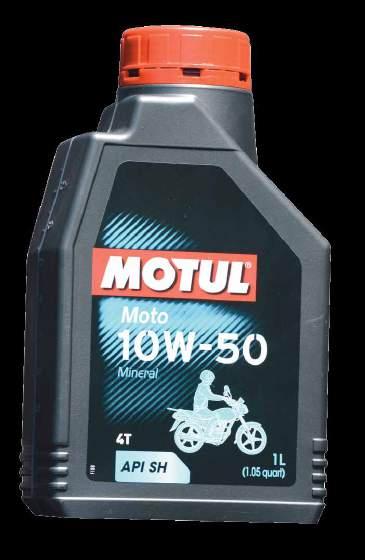
We don’t need to know any more about what they do or how they do it, but seeing those letters on a bottle of oil at the bike shop offers some reassurance the product in the bottle is what it claims to be.
Before we move on, some containers at servos may carry an ‘S’ or a ‘C’. ‘S’ is for petrol and ‘C’ is for diesel. These days, most service-station oils will suit both and are therefore marked ‘SC’, and a lot of brands are now simply – and sensibly – marking the container as ‘Diesel’ or ‘Petrol’. Bike shops will usually have oils marked ‘4T’ for four-strokes and ‘2T’ for two-strokes, and of course there’ll be the volume of the container, often ‘500ml’ or ‘One litre’. If you own a KLR and are going for a ride, you may need to look for a container marked ‘4 litre’.
The API has a list of letter designations and we’ll try and fit that on the page here somewhere. If you’re really keen you can wade through it.
The numbers are where things get tricky, so hold on to your Schuberth E1s because here we go.
The reason there are two numbers to designate an oil is because modern oils are ‘multigrade’. As the name suggests, modern oils meet more than one grade. Yonks ago, oils were only a single grade, and those who cared for their engines,
especially if they lived in climates where it got seriously cold, would run, say, a 30-weight oil in the warm months, but change to maybe a 10-weight grade when the snow started. The 10-weight was much thinner, or less viscous, so in the cold it didn’t become a goopy sludge and sit in the sump like a lump of chewing gum and not lube anything. But in the heat of warmer months it would thin down even further and not do its job, so it had to be replaced with something heavier. The same went for the 30-weight in warm ambient temperatures. It was a heavier or thicker oil, so in the heat it’d cope okay, but in the cold it’d become too viscous or sludgey.
The brainiacs in the lab came up with multigrade oils.
Basically, the oils will maintain their performance parameters through a very wide range of temperatures.
How wide?
Ah! Now do you see the importance of the numbers? They give an indication of the temperature limits at which the oil will do its job…kind of.
We’re going to try and explain something a little tricky here. This is just for the propeller-heads. If you find the concept too difficult to understand, just ignore this bit and jump to the subhead ‘By The Book’ where we tell you how to choose
the oil that’s right for your bike.
Engineers, bless ’em, in their unending quest for precision, don’t do anything very simply.
Using an example of an oil which is marked 10W-40, the two numbers indicate the viscosity the oil will maintain in ambient temperatures between roughly -30°C and +100°C.
To our American chums who’ve been a little slow to embrace the beaut metric system, that’s 0° Fahrenheit to 212° Fahrenheit, and the numbers then mean at the coldest end of the operating spectrum, down to -30°C , the oil will maintain a viscosity of five on the SAE scale. Up to an ambient temperature of +100°C the oil will maintain a viscosity of 40.
That’s pretty tricky when you think about it, and if you’re enough of a propeller-head to be following this, you’ll have figured out multigrade oils must be non-Newtonian fluids, and there could be some interesting effects if the parameters are exceeded.
With that knowledge engineers building motors can look at the oils and go, “This one will do the job with what we’re asking this motor to do.” They then make sure the information is put into owners’ manuals.
That’s the best way to sort out what grade of oil to run in your bike. Go to the owners’ manual and follow the manufacturer’s recommendation. Australia doesn’t really offer the extremes of climate that would challenge most modern multigrade oils, so there’s not a lot to worry about when choosing a grade. Still, the manufacturers know best. Grab your owners’ manual and, wherever possible, choose your oil weight as that manual directs.

We’ve already explained the ‘S’ is a notation for our American mates, and means the oil is intended for petrol engines. The S is often accompanied by another letter which shows how up-to-date the specifications of the oil are. Here’s what that second letter means:
v SG – Introduced in 1989, an SG graded oil has more active dispersant to combat black sludge than previous oils
v SH – Introduced in 1993, SH has the same engine tests as SG, but includes a phosphorus limit of 0.12 per cent, together with control of foam, volatility and shear stability
v SJ – Introduced in 1996, SJ has the same engine tests as SG and SH, but a phosphorus limit of 0.10 per cent together with variation on volatility limits
v SL – Introduced in 2001. All new engine tests reflective of modern engine designs meeting current emissions standards
v SM – Introduced in November 2004, an SM-rated oil offers improved oxidation resistance, deposit protection and wear protection, also better low-temperature performance over the life of the oil compared to previous categories.


Vince Strang Motorcycles is the place for all DR650 advice and gear-up parts. That’s why VSM is also the best place to buy your fully prepped adventure DR650. We have the experience and knowledge and we have the catalogue of parts. Ride in with a stock DR, ride away totally fitted-out. Discuss requirements with Vince and VSM will supply your built-to-spec DR. Station bike, city commuter or full-blown acrossAustralia adventure bike, get the lot – or anything in between – at VSM. Shop ONLINE for our huge range of DR650 parts and accessories www.vsm.net.au





Road jollies come from the flow, corner-to-corner.
IBelow: Corners begging to be linked into a oneness.
Below right: Clean, sharp black and ‘balling up’ right out to the edges.
am amazed at the number of gun off-road riders who drop to the floor, curl into the foetal position, rock and suck their thumb when carving up a few road corners gets mentioned. Riders who make me sick when I see them make an 1190 or GS dance in the gravel, break into a cold sweat when considering a blast up a twisty mountain road. Gung-ho, ex-enduro racers
quivering and telling me they just can’t get their head around road riding have me flummoxed. Those blokes and blokesses have the balance, control and vision to carve up the macadam, but like those of us that make up the humble majority of adventure riders, lack the confidence. The skills aren’t as different as moving from road to dirt and I can vouch for the off-road skills in an on-road
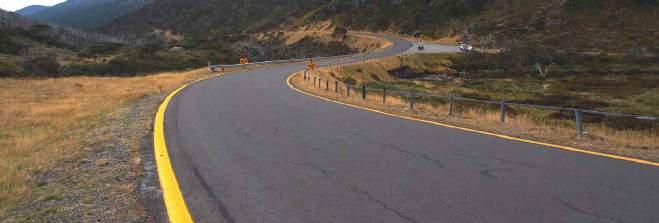

emergency. Let’s face it, the majority of what we do is a confidence trick. A bit of training and a smaller, more-capable off-road bike like the DRZ have done wonders for my own competence.
Although the good DRZ is a joy on the dirt and surprisingly quick on the twisties, it lacks the ‘flow’ of a bigger, more-planted rig.
Sitting at a café with a bike tinkling as it cools after a particularly spirited ride is a sensation only we chosen few get to experience. I love the look of my bike when it’s covered in dirt and dust but the back tyre is clean, sharp black and ‘balling up’ right out to the edges. When I see that, I know it’s being used as close to its full ability as I can get it.
Road jollies come from the flow, corner -to-corner. Not the delicious jiggly, slip and grind of a single track or dirt road, but the smooth transition from line to line, linking a series of corners into a oneness…the accuracy of hitting apex after apex within the narrow side of a drinking voucher. Adventure bikes well ridden will embarrass the humps of the sports-bike jockeys. Those fishing-lure clad wannabes get a mighty shock when a dirt-caked chooky monsters them in the twisty stuff.
Maybe the next trend in off-road training is on-road skills?
Yep. It’s a funny old world!




Waking to thunderstorms on the day we were to pick up the bikes and depart Kathmandu was the last thing any of us wanted. We were already nervous about tackling the manic traffic. Adding rain into the mix was another complication for our first day’s riding in Nepal.
Meg and I had CRF250s, Marty an XR Tornado 250 while Dave and Steve had opted for the mighty Bajaj Pulsar 220. As Marty said, the Pulsar is the DR650 of Nepal – an all-round adventure bike. They’re absolutely everywhere and will go anywhere. Really all they need is a suspension upgrade and a bashplate and they’d be perfect.
No-guided tour
Getting ready to leave the bike-hire place was an ordeal in itself. We hadn’t really been expecting it to be too hard – we’d been in constant email contact. But the Bajajs had no racks and the XR kept stopping.
There were five of us on this trip: Marty Tobin,
who’s ridden most of Australia including The Simpson, The Canning, The Flinders Ranges and most places between, but this was his first time riding overseas; Meg Lees, who usually rides solo, and has ridden around Thailand, Spain and neighbouring countries; Steve Johns lives in Thailand and has ridden extensively around south east-Asia, most recently in Myanmar; and Dave and I.
We decided to go without a guide for this trip, and a couple of weeks in we were undecided if that was wise. Being pulled over by the traffic police in Pokhara and told they could impound our bikes because it was illegal to ride private bikes out of Kathmandu might’ve been slightly less distressing with someone to interpret. We’re still not sure if it was our charm or general naivety that got us off. Also, I didn’t check visa requirements and lengths before booking our flights. As a result we figured we were better off paying $100US up front for a 90-day visa, even though we’d only be in the country for 34 days.


With the clutch sorted on Steve’s Bajaj (it failed on the first day, which meant a couple of hours sitting on the street in Pokhara while the dirt-floor workshop of the Bajaj dealership charged US$44 for clutch, air filter, oil and labour) the bikes have been going well (touch wood).
Early, unseasonal monsoon rains have added to our little adventure too. The first time one of these hit we took shelter under the verandah of a little shop to wait it out. It subsided enough for us to have a crack, but Steve’s Bajaj began running like a hairy goat. It was misfiring and stalling and he pulled up at a shelter to assess the situation in the dry. A couple of blokes were also sheltering there and were a bit bemused when we all piled in, dragging the Bajaj with us, to see if we could work out what was going on.
Through a process of elimination the blokes ruled out obvious problems. There was some suggestion of swapping Steve’s bike for the one the guys were on. Dave had a look at theirs and saw a helpline phone number on a sticker and was able to establish it was a Bajaj helpline – which filled us with no confidence.
Steve was ready to drop his cigarette down the fuel tank
u

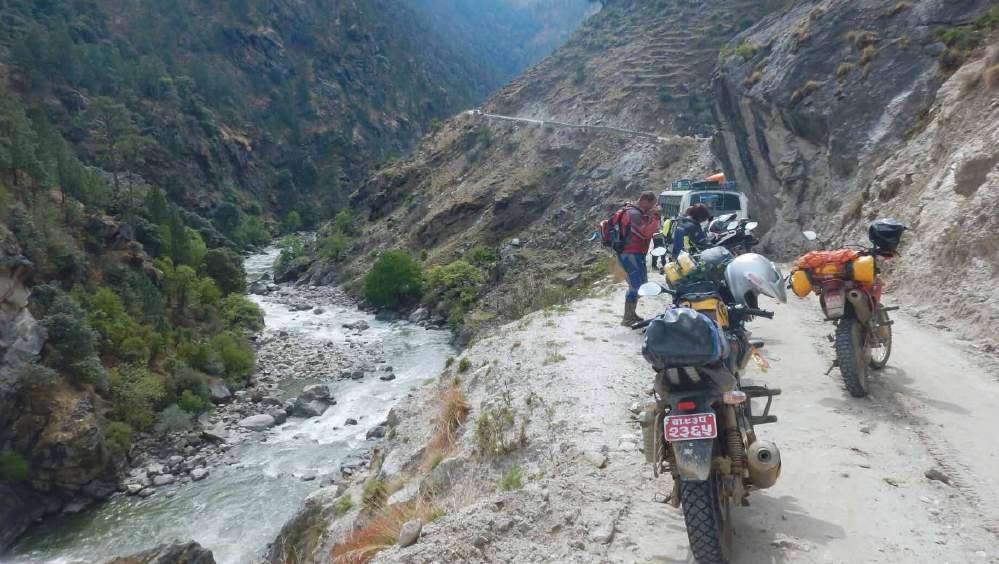
when one of the local guys stepped in. Basically, he revved the guts out of it and it was as good as a new Bajaj.
The challenges didn’t stop there that day. There were a number of people walking down the road in the direction we were headed just as we were gearing up to go. Apparently they’d been on a bus that got stuck and were now finishing their journey on foot. They said it was too hard and no one was getting through.
That wasn’t what we wanted to hear at 4.00pm when we were miles from anywhere.
We decided to take a look at the road and make a call on it. Some trucks, a couple of buses and about 60 people were standing around looking at a bus stuck in the sloppy black mess of river and collapsing bank. The turn was too sharp and the driver had reversed up river to get another go at it and now no-one was going anywhere.
It looked completely impassable to me, but the three blokes thought otherwise. A tractor turned up just as we were starting to debate our options which decided things for us – there was nothing behind us for at least three hours and up ahead, if the road was okay, maybe two hours. If we waited for the tractor to pull
the bus out we’d be stuck for longer, plus the ‘road’ would be even worse.
We plunged into the slop around the river and climbed the other side and the cheers of the locals made us feel pretty good.
We arrived on dark in a village and were immediately surrounded by people. Fortunately for us someone suggested a guesthouse owned by a Marc Marquez fanatic with a CBR250R. He’d taught himself to do wheelies on the deplorable roads and turned out to be a lovely host who showed us around the next morning.
We seemed to attract a lot of attention wherever we went and not necessarily just in places that didn’t see many foreigners. We lost count of how often people asked for selfies with the 1.9m Marty. Despite the fact we often passed by people two-up on Bajajs, people were constantly amazed by where we’d been on the bikes.
Every day is bringing new challenges and experiences. We’ve been shocked by
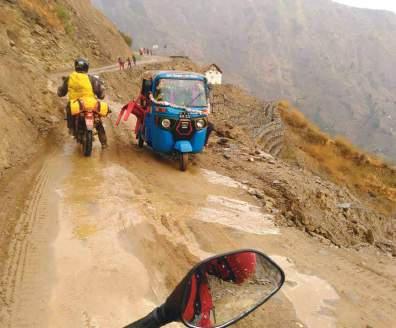
the pollution and rubbish in some places and totally overawed by the scenery in others. It’s taking a lot longer to get places than we would have ever imagined possible. One day it took 10 hours to travel 320km, and that was on main roads!

I’ve
R Check visa lengths and costs before booking flights
R Momos, a type of Nepalese dumpling, are amazing
R Bajaj Pulsars are a real go-anywhere adventure bike
R It takes a long time to ride a very short distance in Nepal
R A 10km shortcut can add a day to a journey




It’s the eternal question: “What is an adventure bike and how do I get the best from one?” Unlike many, Miles Davis has an answer.
We all have our own idea of what the word ‘adventure’ means. But when

I looked up the actual definition, it’s described as ‘an unusual and exciting or daring experience’. That seems to fit the bill nicely.
But what is the definition of an ‘adventure motorcycle’?
When you think about it, based on the definition, any motorcycle is an adventure motorcycle, from a Harley to a trials bike. They’re all unusual, exciting and daring.
But the term ‘adventure motorcycle’ seems to be a bit more specific, referring to a dualpurpose bike that allows a rider to cover large distances of road
Above: A bike designed for both onand off-road use is always going to be a compromise.
Left: Luggage capabilities are important.
and off-road terrain. And for me, it also means as much about the travel and destinations as it does about the actual riding. Most people would agree, for a bike to fit into the adventure category, it should have some or all of the following:
R On- and off-road capability
R Longer-than-normal fuel range
R Comfortable, upright riding position
R A screen for wind and weather protection
R Luggage capabilities.
Compromise is guaranteed
The fact a bike is designed for both on- and off-road use means there’s always going to be compromise, it’s just a

matter of where you choose to have it. Some riders are intimidated at the thought of taking the bigger bikes off road, which is fair enough. To a novice rider, a bigger bike can be a handful
Any motorcycle is an adventure motorcycle.
in technical terrain, sand and other challenging environments. But the bigger bikes can really eat up the kilometres so well, allowing long-range travel in comfort. Smaller bikes may be easier to




handle off-road, but can be torturous when it comes to bigger distances. Whatever you choose, it’s going to be a compromise one way or another.
So what makes an adventure bike an adventure bike?
As a keen motocross rider I accept I need to transport my unregistered motocross bike to the track in a van or trailer. As a trailbike rider, depending how far you live from the bush or your type of registration (full rego or, available in some States, recreational registration) you





may have the luxury of being able to ride from your house. It may still make more sense to trailer your bike to the riding areas.
For me, one of the things that differentiates a trail bike from an adventure bike is, regardless of where you live, your adventure can begin straight from your
Above: It can be a bit overwhelming to learn the basics of off-road riding on bigger, more expensive machines. Right: Skill makes up for bike size, off-road tyres, suspension mods and more.
Below: It’s as much about the travel and destinations as it is about the actual riding.
front door. Pack your bike up as required for a day ride or multi-day adventure, click first gear and go. No need for loading bikes, packing and driving, parking, unloading and gearing up before you ride. Of course there may be exceptions to this for various reasons, but in essence you ride your adventure bike from your doorstep.
Some people have evolved to adventure bikes from other forms of off-road riding, and that can give them an advantage. Others come from road riding, or maybe have just started riding and their


adventure bike is their first bike. For these riders it must be a bit overwhelming to learn the basics of off-road riding on bigger, more expensive machines.
If a rider isn’t skilled off-road they’ll probably still struggle in technical terrain, even on a smaller bike. We always say at rider training events: “The rider is the key”, “The bike isn’t the limiting factor”, “Skill makes up for bike size, off-road tyres, suspension mods and more”.
Definitely consider the size of the bike to suit your needs and experience, and also consider off-road training to increase your skills. This will ensure you get the most out of that bike and your riding experience.









SIX issues of the magazine that has the same passion for adventure riding you do. Save $4.70!

12 issues choc-full of the world’s most isolated destinations and the country’s bucket-list routes written and photographed by the people who were there. For a two-year subscription we’ll include a unique, specially designed Adventure Rider Magazine tee* worth 24.95. That’s a whopping $144.35 value for just $98! $98 * T-shirt design subject to availability Big savings on Australia’s only dedicated adventure-riding magazine!







Log on to
www.advridermag.com.au/store and keep the adventure throbbing…
Thousands of kilometres of premium dualsport and adventure riding on route sheet and as GPX files. Complete with fuel and accommodation contacts and info, route section times, stories and heaps more.




Serious hard-core adventure riding at its best, all captured on camera and crafted into




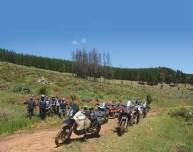
The ultimate adventure-riding distress beacon that should be part of every adventure rider’s kit. Provides six independent means of rescue:
406MHZ transmission
121.5 MHZ homing signal
GPS location
Visual strobe
Signal mirror
Whistle on lanyard Manufactured in Australia. 10-year battery life. 10-year warranty.

Quick! Get some of this great gear before you do your tax and get a big bill from the accountant!
The Deuce of spades! Ha!
R Alloy toilet trowel for when nature calls
R Super lightweight — just 17 grams
R Very compact, 173mm long
R Reversible — dig with either end
R Sharp enough to cut small roots
R Colours: Fire or Sky
RRP: $32 with free shipping
Available from: helinox.com.au

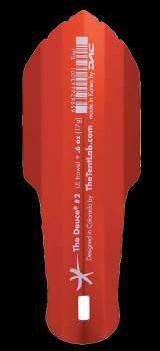
Three jackets in one: outer layer, H2Out membrane and quilted lining.
R Force-Tech, CE-certified removable protectors
R Waterproof, windproof and breathable H2Out garment
R Step-in clothing: layered clothing system
R Vents
R Zip fastener to join jacket and trousers
R Resealable vented panels
R High-tenacity polyester fabric
R Reflex zones for night riding
R Sizes: M/L/XL/XXL/3XL
RRP: $499Available from: Moto National Accessories Web: motonational.com.au
Dedicated off-road performance with reasonable on-road manners.
R A mix between a desert race tyre and an adventure tyre
R The most aggressive off-road adventure tyres in the Motoz range
R Based on the popular Tractionator Adventure
R More aggressive off-road grip
R Motoz tested and proven construction and compound
R Self-cleaning and self-sharpening tread pattern
R Designed by Australians for Australian conditions from outback desert to coastal forests and fire trails
RRP: Front 90/90-21 $159.95. Rear
150/70-18 $269.95.
Additional sizes available late 2018
Available from: Your local dealer Web: jtr.com.au
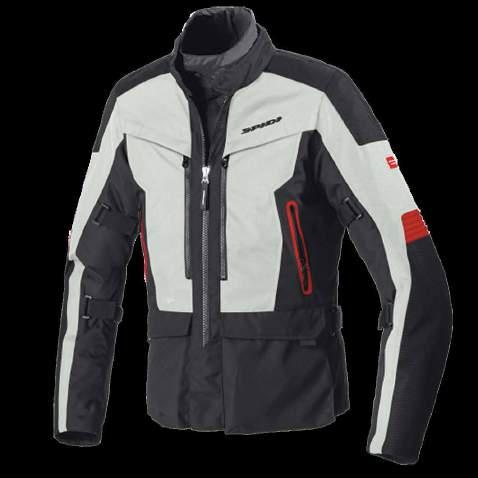

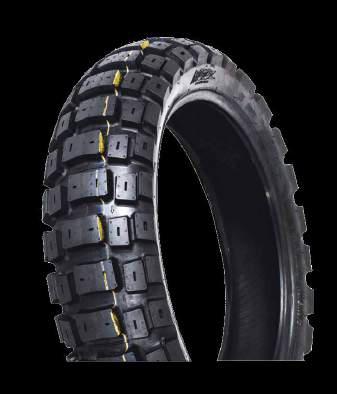
For Super Ténéré 2010 onwards. Made from high quality, heat-resistant titanium alloys Sophisticated design, with Super Ténéré logo decal Creates an exciting sound Reduces weight by 2kg
RRP: $1196.63
Available from: Authorised Yamaha dealers

oHlinS crf250l/rAlly fork kiT
An upgrade kit with fork springs and top caps for additional function and performance from the standard forks
R Suits all CRF250L and Rally models from 2013
R Increases front-end stability
R Increases comfort
R Black, anodised fork caps
R Allows two spring options in the one kit
R Part number FSK123
RRP: $372
Available from: Teknik Motorsport


giAnT loop Dry bAgS
Lots of nice new upgrades and features.
R 100-per-cent waterproof
R Can be secured to virtually any motorcycle
R Now with an air-purge valve
R Shoulder straps included for backpack-style carry
R Giant Loop-branded rubber grab handles
R Contrasting black reinforcement/attachment patches
R Multiple reflective accents
RRP: Rogue $115. Tillamook $135. Columbia $195
Available from: AdventureMoto Web: adventuremoto.com.au

A blend of urban looks with touring functionality.
R Synthetic Ripstop polyester blend with Night-Eye reflective finish
R Safe-Tech CE shoulder and elbow armour and CE back protector prepared
R Three-layer lining system with RAINTEX waterproof, breathable membrane and zip-out thermo liner
R Air vent panels in chest and air pocket on the back
R Belt loop to hold jacket down securely and reflective material on sides and back

R Colours – Camo/Night Eye, black/grey, grey/ivory/Night Eye
R Men’s sizes S – XXXL
RRP: $449.95
Available from: Selected stockists Web: linkint.com.au/macna.html
Designed for flexibility and comfort.
R TPU shin plate and calf plate
R Inner TPU ankle protector is double density on the medial side
R Biomechanical, lateral flexi-blade system
R Soft, poly-foam surrounds the ankles and collar
R Polypropylene insole with steel shank co-injected
R CE-certified
R Boot height stops just under the calf
R Sizes 8-13
RRP: $379.95
Available from: All motorcycle stores Web: monzaimports.com.au
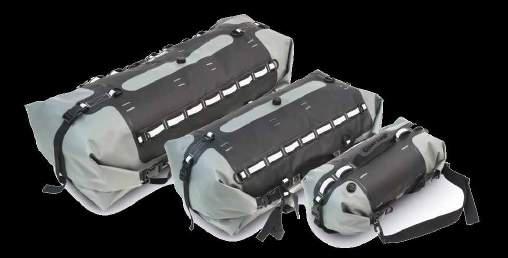


rAD guArD Suzuki Dl650xT
This bike is designed for adventure, but a hole in the radiator might put a stop to the trip of a lifetime.
R Allows adequate airflow into your core and doesn’t comprise temperature
R Bolts on to existing mounting points on the bike
R Three-year worldwide warranty
R Easy to fit with fitting time only five to 10 minutes
R Made of high-grade aluminium
R Available in black or polished
R Australian-made
RRP: $195.
On special for $159

Available from: Rad Guard Phone: (02) 6658 0060 Web: radguard.com.au
A simple way to strap luggage to any bike.
R Designed for serious adventure riders
R Optimised for carrying luggage on the sides
R Side straps provide plenty of mount points and the spacing is MOLLE compatible
R Top-mounting surface on the Scramble Rack is designed for small packs
R Fits many adventure bikes
R Girth or fender hitch
R Quality webbing material and steel buckles
R Hand-made in the USA
RRP: $99.99 with free delivery in Australia
Available from: Smart Motorcycle Accessories Web: smartmotorcycleaccessories.com.au
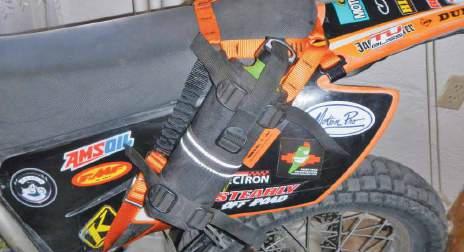
For KTM 690 (2011-2017) and Husqvarna 701 Enduro models.
R Heavy-duty billet aluminum brake pedal
R Optional pedal pad or can use existing factory pad
R Two colours: machine finish or black
R Quality product designed and manufactured by owner
R US-made by a US-owned company


RRP: $185 - $197
Available from: Adventure Motorcycle Equipment
Phone: 1300 883 908
Web: www.adventuremotorcycle.com.au
remuS kTm1290 Super ADvenTure Slip-on exHAuST
More power and more torque for the big Kato.
R Available in black or matt stainless steel
R Power and torque Increase (+5.5HP/+5.1Nm)
R Weight saving (2.4kg)
R Sonorous Remus sound
R Standard carrying cases easily mountable
R Street-legal and race versions available

reg & co wineS
Wines made by a rider for riders. Moments to remember.
R Approachable reds to drink now or cellar
R Award winning Riesling that is crisp and clean
R ‘Tank Slap’ Riesling
R ‘Over the Bars’ Shiraz
R ‘The Highside’ Cabernet
RRP: $300 per dozen plus $20 delivery Australia-wide Order online at reg.wine

A fourth-generation pack that adopts the new CONFIGR8 adaptive pack harness system and a versatile tool pack.
R Construction 1680D poly fabric
R YBS water-resistant zips with rubberised all-weather pulls
R Moulded EVA (bio-foam) back panel
R PU articulated pack shield insert
R Nine-litre capacity
R Removable waist belt and shoulder harness
R Four storage pockets
R CONFIGR8 ladder-lock adjustment system (tool-free)
R Source three-litre hydration system
RRP: 179.95
Available from: www.zacspeed.com
Email: info@zacspeed.com
Perfect lightweight back-up boots for when you use your adventure bike around town.
R CE level-1 protection
R Vented waxed leather
R Anti-slip, anti-crush sole
R Internal ankle protection
R Padded leather tongue
R High-quality, 100-per-cent European
R Anti-bacterial insole
R Lace closure
RRP: $199
Available from: formaboots.com.au or any Forma dealer

A jacket worn in multiple Australian Safari wins with the GHR Honda team.
R Outer shell – 600D polyester, 600D RIPSTOP cordura
R 1000D, four-way stretch- and abrasion-resistant mesh
R Detachable waterproof and thermal liners
R Zip-off sleeves
R Hydration pocket with bladder included
R Five outer pockets and hand-warmer pockets
R Connection zip for pants
R Available colours: Black/black sizes S - 8XL. Black/grey sizes S - 4XL



RRP: $399.95
Available from: Your local motorcycle dealer Dealer enquiries phone: McLeod Accessories 1300 300 191
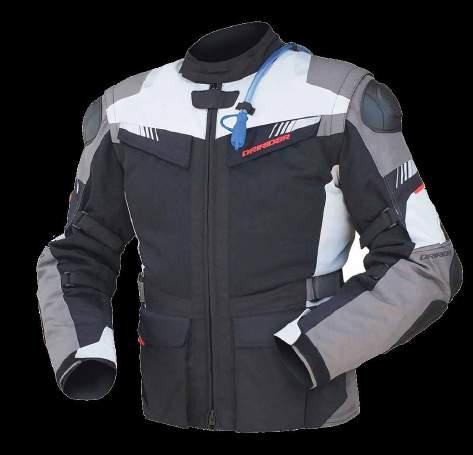
Reduce all those layers and control your body temperature with electric heating panels.
R Six heating panels
R Three temperature settings
R Built-in controller
R Control your heat from the ’bars with the optional wireless controller
R Plugs into the bike for endless heat
R Pre-wired cables in the sleeves for heated gloves
R Lightweight and slim to fit under any jacket
R Soft, flexible heating panels

RRP: $259
Available from: Zarkie Web: zarkie.com.au
A long-sleeved mid-layer jacket. Just the shot for a cold ride.
R Light and breathable
R Made of natural fibres where possible
R A bit slippery to move inside outer jacket
R High warmth-for-weight ratio
R Windproof
R Easily washed and quick to dry
R Cosy, with hand-warmer pockets
R Long in the arms and body in sizes small to XXL

RRP: $295 plus postage
Available from: Andy Strapz
Phone: (03) 9786 3445
Web: andystrapz.com
Easily lift and move your bike.
R Lightweight and durable materials
R Perfect for use in narrow spaces
R High-quality 4 x 75mm swivel wheels
R Adjustable without tools
R Suitable for bikes with a wheelbase from 130cm to 152.5cm
RRP: $334.95
Available from: Pro Accessories Web: proaccessories.com.au


An all-seasons, multi-function adventure backpack.
R Lifetime warranty
R Electronically heat-welded seams make this bag 100-per-cent waterproof
R Made of waterproof and durable Tarpaulin PVC
R Coated outer material prevents slipping or marking
R Waterproof purge valve makes load compression easy
R Includes quick-release strap to mount as waterproof tailbag
R Removable MOLLE panel is reversible with waterproof map pocket
RRP: 20-litre $159.95. 40-litre 189.95
Available from: Selected stockists Web: linkint.com.au

TourATecH rAin jAckeT
No new-fangled frills, but the functional design is both classical and practical.
R Waterproof and breathable membrane
R Hood integrated in the jacket collar
R Reflective material on upper body and arms
R Front zip sealed with velcro fastener
R One inner pocket behind the velcro fastener
R Good visibility through neon yellow on the upper body and upper arms
R YKK zips
R Available in sizes S, M, L, XL, XXL, XXXL
RRP: $214.19
Available from: shop.touratech.com.au
Web: touratech.com.au

Good gear for DR650s and KLRs.
R RST (Reduced Sound Technology)
R The quietest DG muffler: 89db@3200rpm
R Designed especially for dualsport machines
R Stretches time between muffler repacks
R Included are a stainless-steel mid-pipe, USFS-approved spark arrestor and a new aluminum end cap
100-per-cent waterproof saddlebags. All seams are electronically heat welded.
R Mounting hardware is aircraft-grade aluminium
R Includes two lightweight saddlebag liners
R Firm internal back plate
R Each bag securely mounts using four quick-release cam buckles and double-pull webbing
R Made from waterproof and durable 24oz tarpaulin PVC
R UV-coated outer material
R Available in black or yellow/black
R Holds 27.5L per side
RRP: $295
Available from: Vince Strang Motorcycles
Web: vsm.net.au

On and off fast.
R PU-coated nylon fabric
R Reinforced, double layer in inside-leg area
R Special fixing allows the leg hem to clip to the waistband
R Long side zips for easy entry
R Complete with detachable stirrup to prevent legs riding up
R Anti-slip seat patch
R Sizes: XS to 7XL
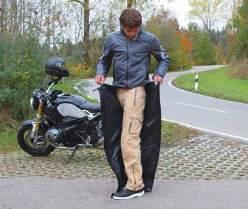

RRP: $145
Available from: heldaustralia.com.au



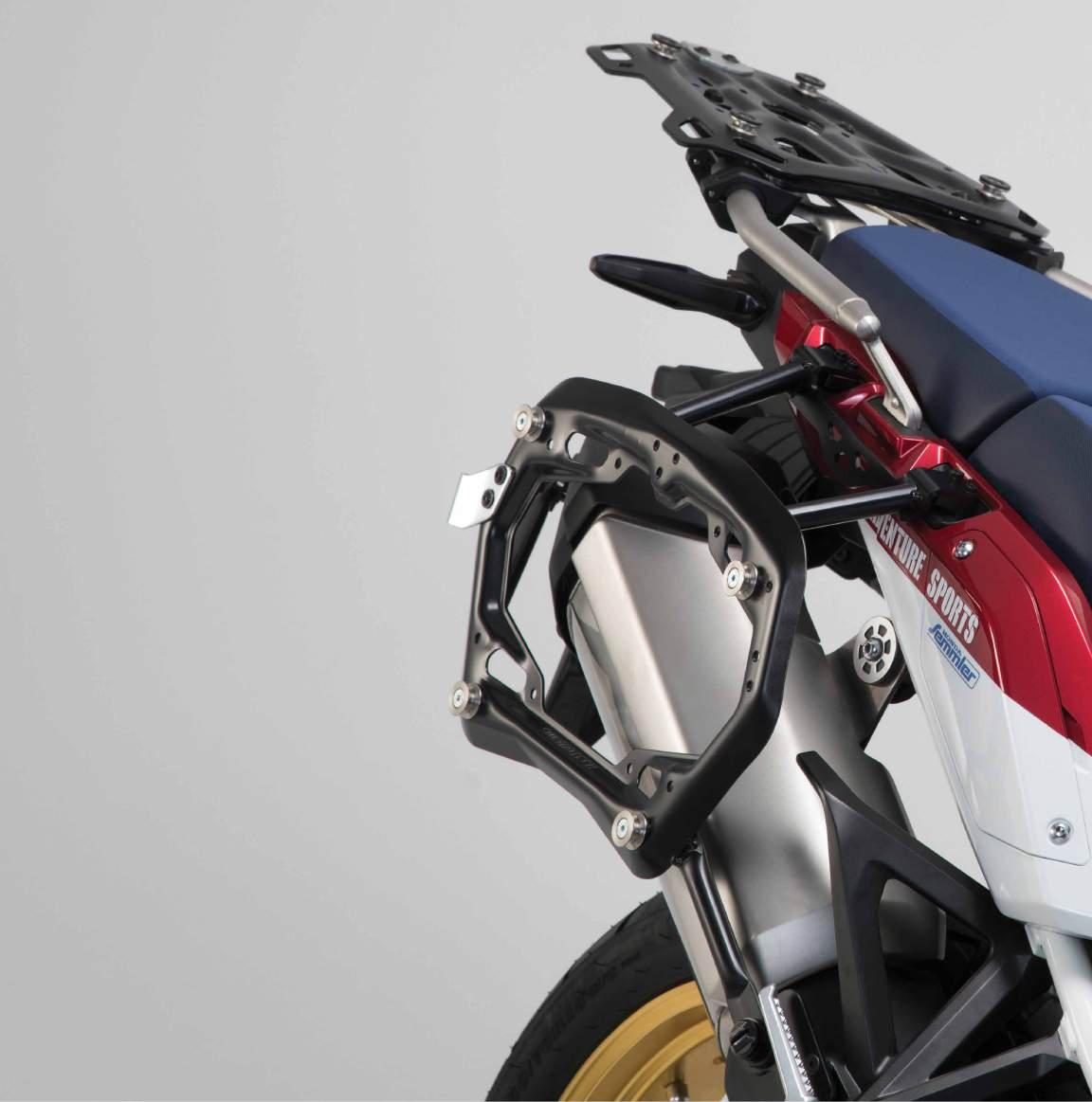
SW-Motech revolutionised the market with the introduction of the first removable carrier over 15 years ago. They have now released a range of luggage racks, being even more robust and versatile – just what we needed for the Australian market. And in SW-Motech fashion, rear racks and side carriers still support attachment of other manufacturers’ cases and now allow for carrying of Rotopax fuel and water cells.

LASHING EYELETS
SW-MOTECH MOUNTING KIT
• Maximum strength, minimum weight
• Perfect for demanding adventures and off-road use
• Designed for mounting of hard and soft luggage
SW-MOTECH MOUNTING KIT

• Extremely durable due to its optimised shape
• Completely removable with improved QUICK-LOCK release system
• Bike specific ensuring perfect fit






